As part of the excursion to which our hosts in Masindi took us one day, after a safari in various parts of the Murchison Falls National Park, we also went to the waterfalls themselves that are also located in the national park. Namely, the entire national park is named after them.
To start with, here’s a reminder of the places I visited during this stay in Uganda.
As for the waterfalls, they are located on the Victoria Nile. I’ve mentioned in the previous sequel that the Victoria Nile is a part of the White Nile, which, together with the Blue Nile, converges at Khartoum, the capital of Sudan, and flows northwards as the Nile. The name “White Nile” comes from the clay sediments that the river carries, giving it a pale colour.
The river originates from various sources in Rwanda and Burundi, then as the Kagera River, it flows into Lake Victoria, from where it emerges as the Victoria Nile. After about 400 km, along which the Murchison Falls are located, the river briefly flows into Lake Albert from where it emerges again as the Albert Nile. When it reaches South Sudan after 210 km, its name changes yet again to Bahr-al-Jabal, but all of this refers to one river, which is the White Nile.
By the way, since I’m mentioning this, I should also note that all of these “Victorias” and “Alberts” in the names originate from the colonial era and these are the names given after Queen Victoria and her husband Albert. The times and rulers have changed, but the names have remained.
The same applies to the Murchison Falls themselves – they were named after Roderick Murchison, the president of the Royal Geographical Society, and the name was coined by Samuel Baker who “discovered” the falls in the early 1860s. These “discoveries” are, of course, always associated with foreigners who were documented to come here “first”; the local inhabitants have always known about such places.
Admittedly, in the case of the Murchison Falls, during the 1970s under the rule of Idi Amin, the falls were renamed the Kabalega Falls, after the renowned ruler of the Bunyoro Kingdom (see: https://svudapodji.com/en/uganda-1/). However, later on, the name reverted back to the Murchison Falls.
Regardless of what I might think about all this, these sections of the White Nile and the waterfalls belong to the people of Uganda. If these names are acceptable to them, then it’s entirely appropriate for these names to be retained. As a side note, Uganda is home to over 70 languages!!! This is a wonderful aspect that reflects the incredible diversity in the country. However, even as a language enthusiast, I must admit that this simultaneously complicates matters. Hence, English remains the main official language, although steps are being taken to declare Swahili as the second official language. Meanwhile, a significant portion of the population uses Luganda.
So, when we reached the Murchison Falls, we were greeted by the local “residents” – tiny vervet monkeys (Chlorocebus pygerythrus).
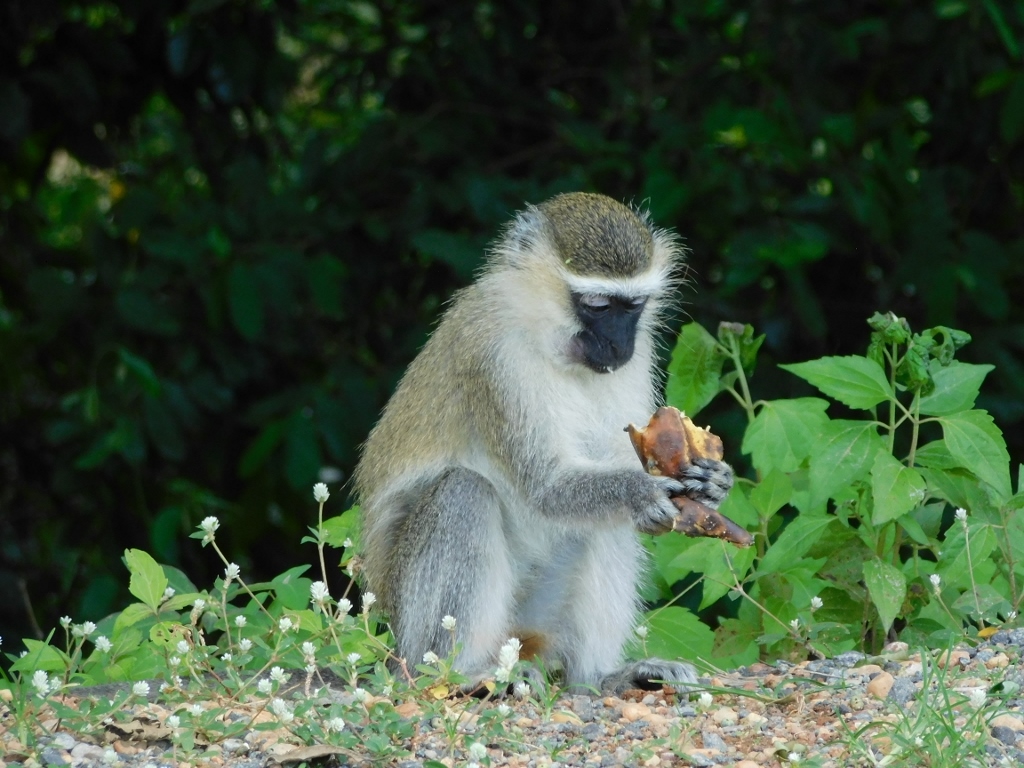 Vervet monkey
Vervet monkey
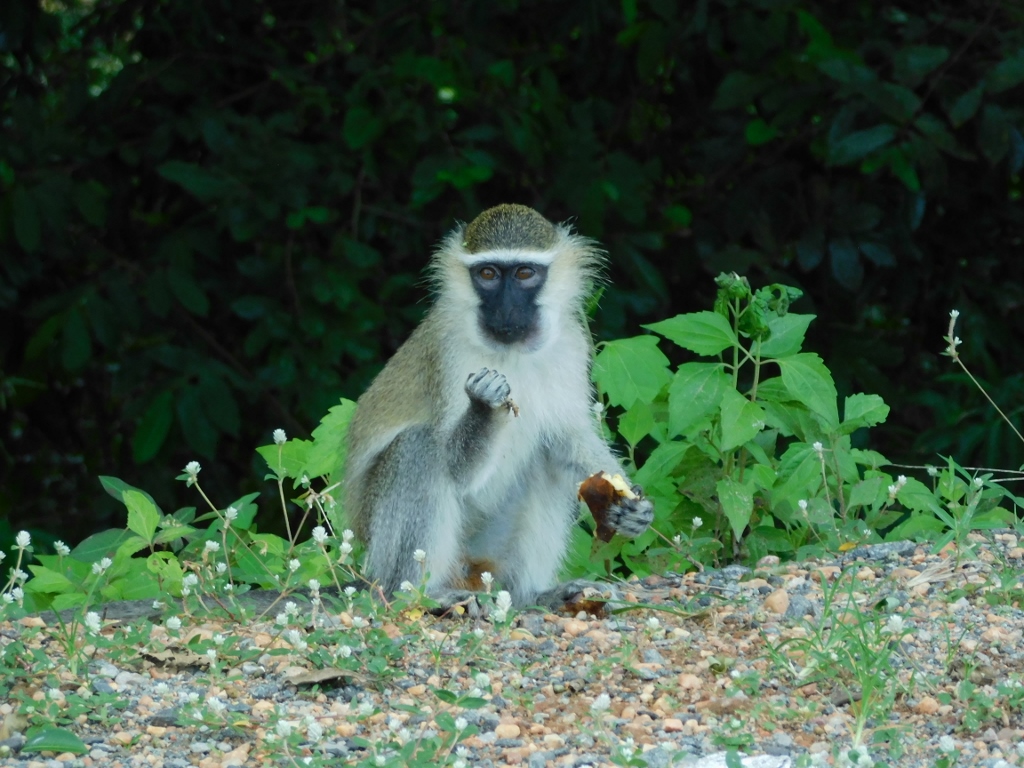 Vervet monkey
Vervet monkey
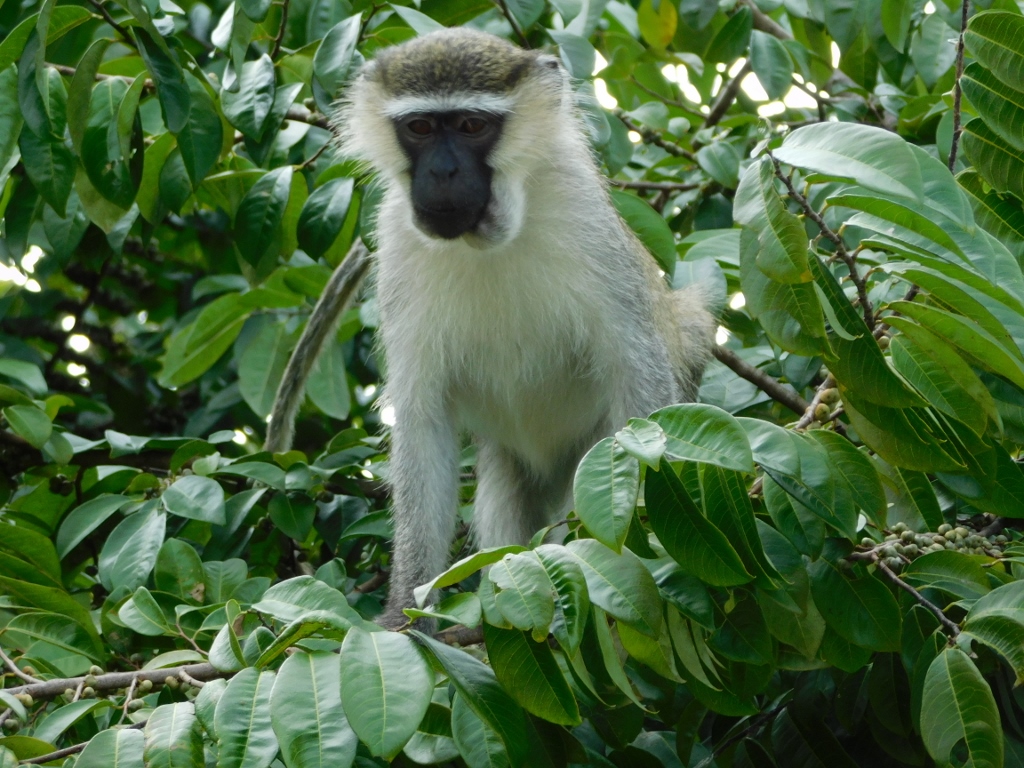 Vervet monkey
Vervet monkey
Nearby, there were also a couple of termite nests in the form of mounds. I’ve seen such termite mounds in several places, but here I remembered to take photos of them.
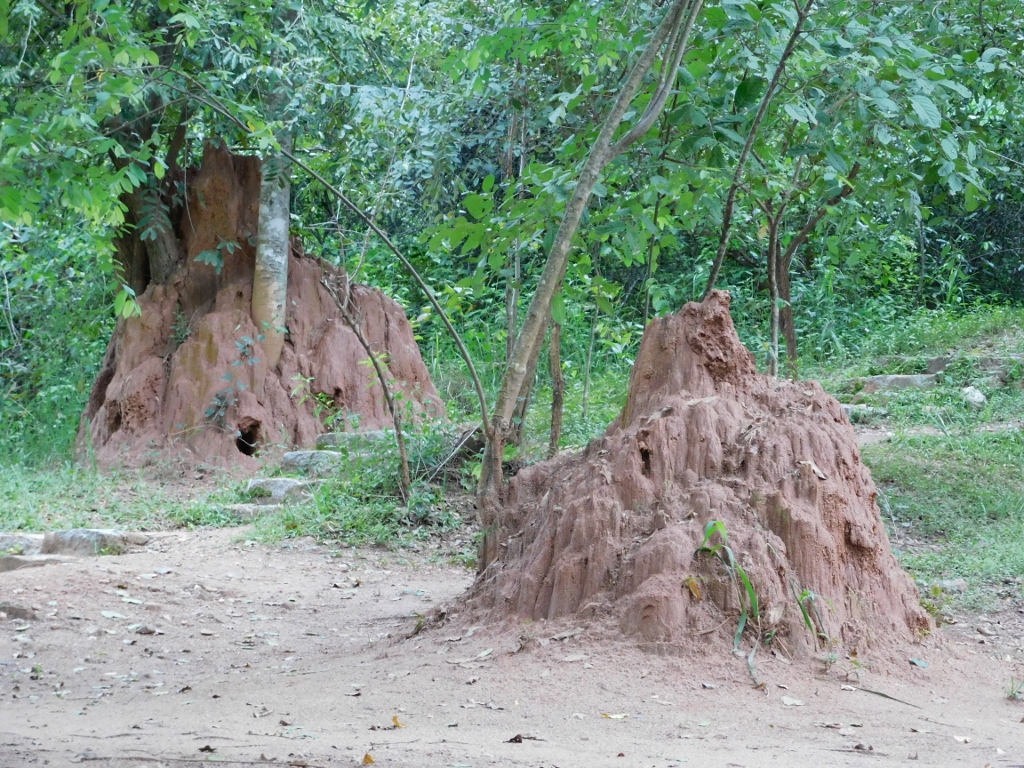 Termite nests
Termite nests
And as for the waterfalls themselves – they are spectacular! Even Samuel Baker considered them the most beautiful waterfalls on the Nile. Their beauty does not come from their height, the width or the size. It is precisely the narrow passage for the large amount of water flowing through that creates their unique beauty. The White Nile, which is just under 50 meters wide approaching this point, narrows to a passage between large rocks that is only 7 meters wide. The water then falls for less than 45 meters and continues to flow through a small gorge that is about 10 meters wide. Due to the immense volume of water forced to flow through this narrow passage, the Murchison Falls is considered the most powerful waterfall in the world.
This, of course, has not gone unnoticed among individuals and companies involved in electricity generation. There were even projects to build a hydroelectric power plant here, but fortunately, Uganda rejected such a project in 2019 to preserve this natural phenomenon.
The falls were even more powerful until 1962, but at that time, owing to significant flooding, another passage for water was naturally opened. Nevertheless, this change does not diminish the beauty of the scenery and the falls remain exceptionally stunning.
 Murchison Falls
Murchison Falls
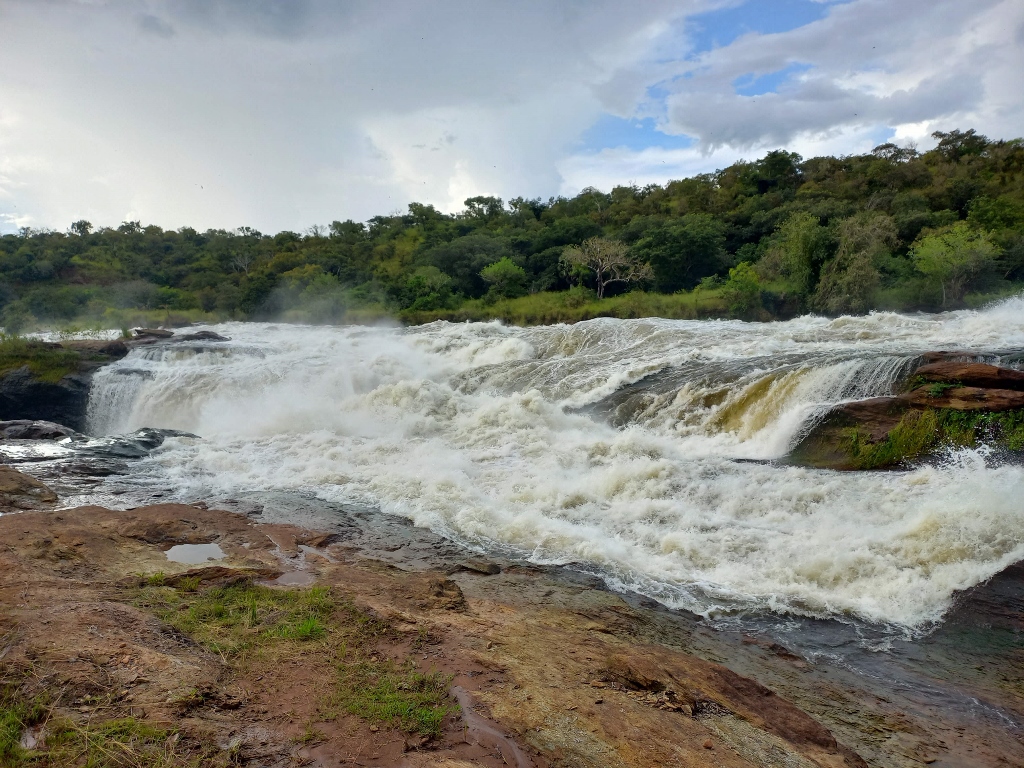 Murchison Falls
Murchison Falls
 Murchison Falls
Murchison Falls
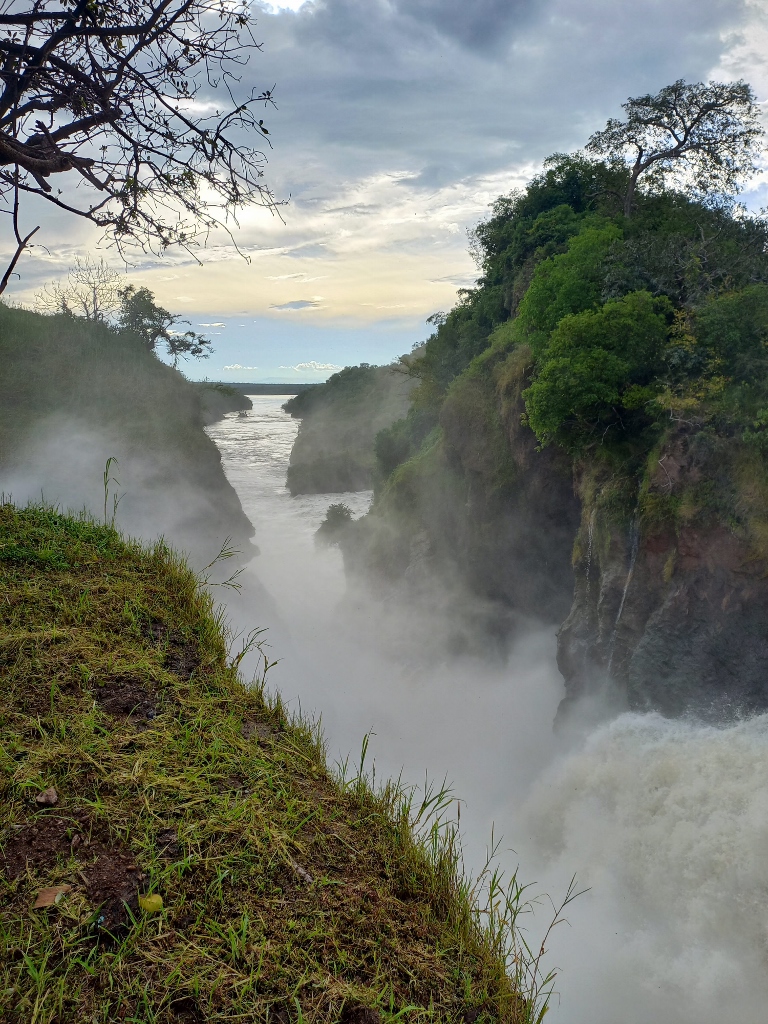 Murchison Falls
Murchison Falls
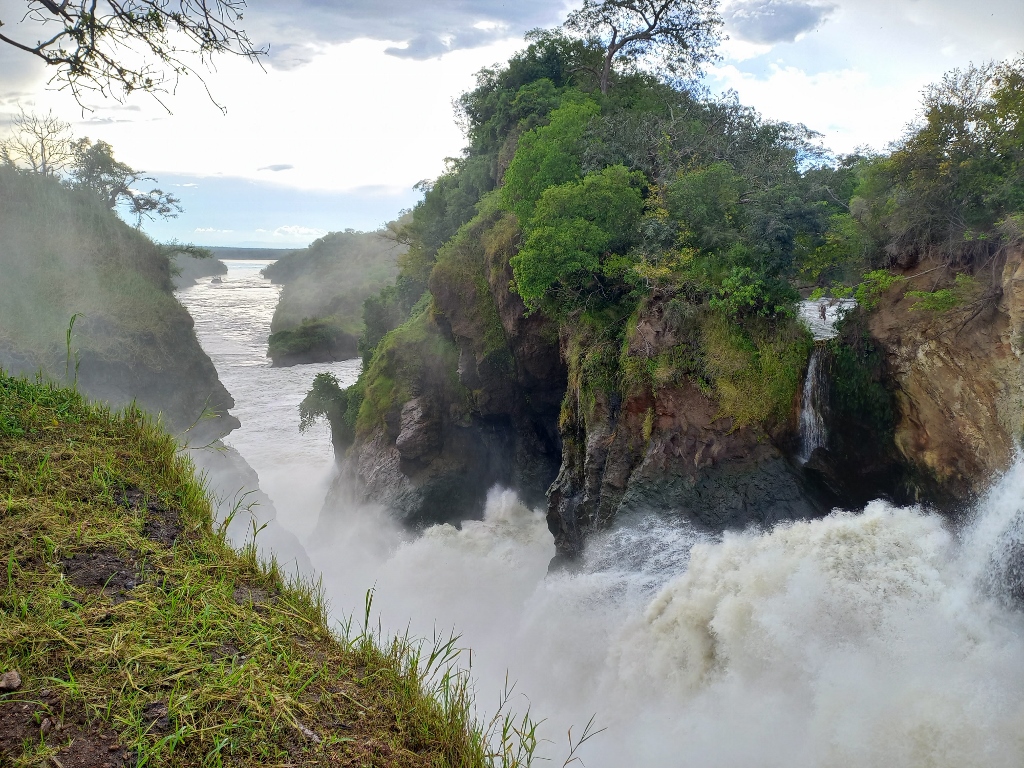 Murchison Falls
Murchison Falls
Here, we first descended to a spacious plateau from which various parts of the river and waterfalls could be observed – from the approach and the initial cascades to the actual drop and the course further through the narrow gorge.
But from there, you can also climb to another viewpoint on an elevation where the waterfalls can be observed from a different angle. Additionally, you get a clear view of the continuation of the gorge leading to the calmer flow of the river. Although it wasn’t the high season, there were other visitors both on the plateau and along the path leading to that elevation, including locals and foreigners alike. Some approached the second viewpoint via a descending path. I believe there’s a possibility to observe the waterfall from an even higher point, but I also know there is a path leading down to the river itself.
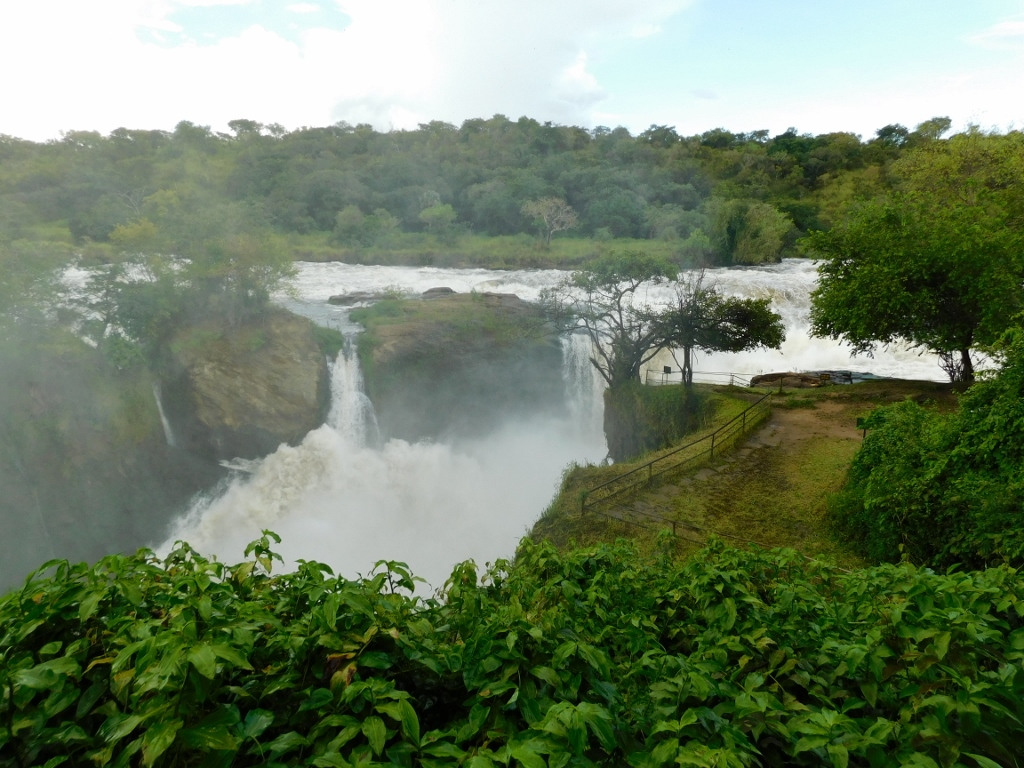 Murchison Falls
Murchison Falls
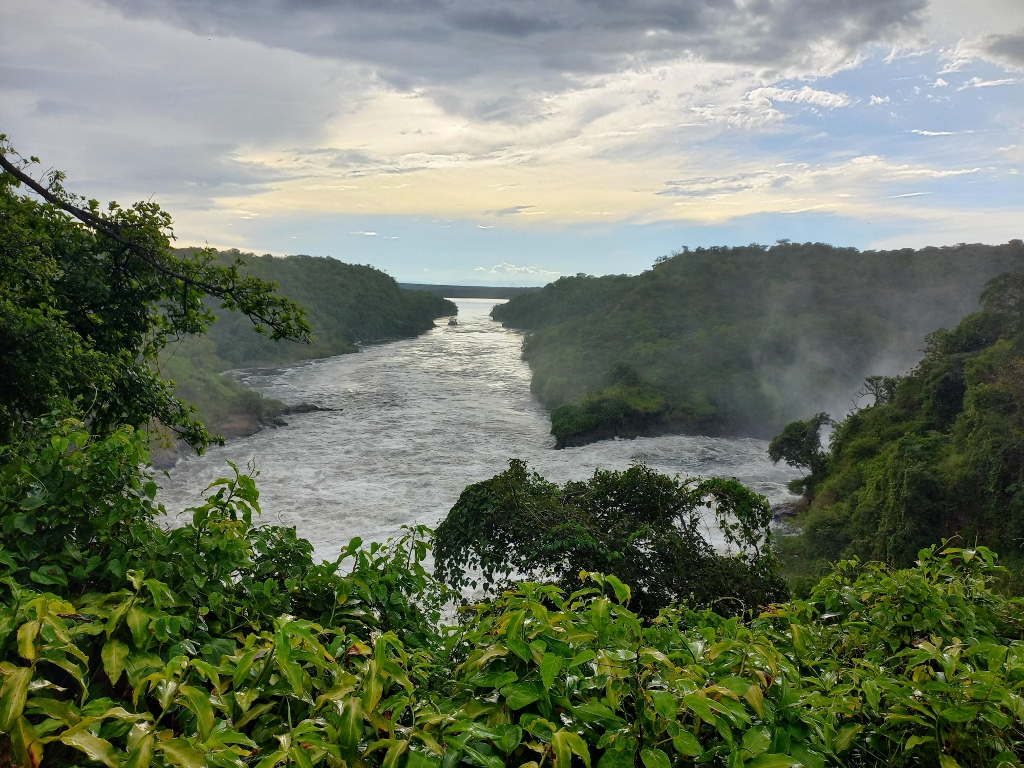 Murchison Falls
Murchison Falls
I was quite satisfied with just climbing to that second viewpoint because when you reach that elevation, you get completely drenched in a natural shower. The water from the waterfall splashes in all directions, creating a kind of mist from tiny droplets that the wind carries uphill, directly toward that elevated viewpoint. I didn’t take any specific photos there and I put on a thin jacket to avoid getting completely wet. As I descended to the “dry” plateau, I took off the jacket but remembered to take a selfie with spectacles on. Behind me, you can see that natural shower directed upwards.
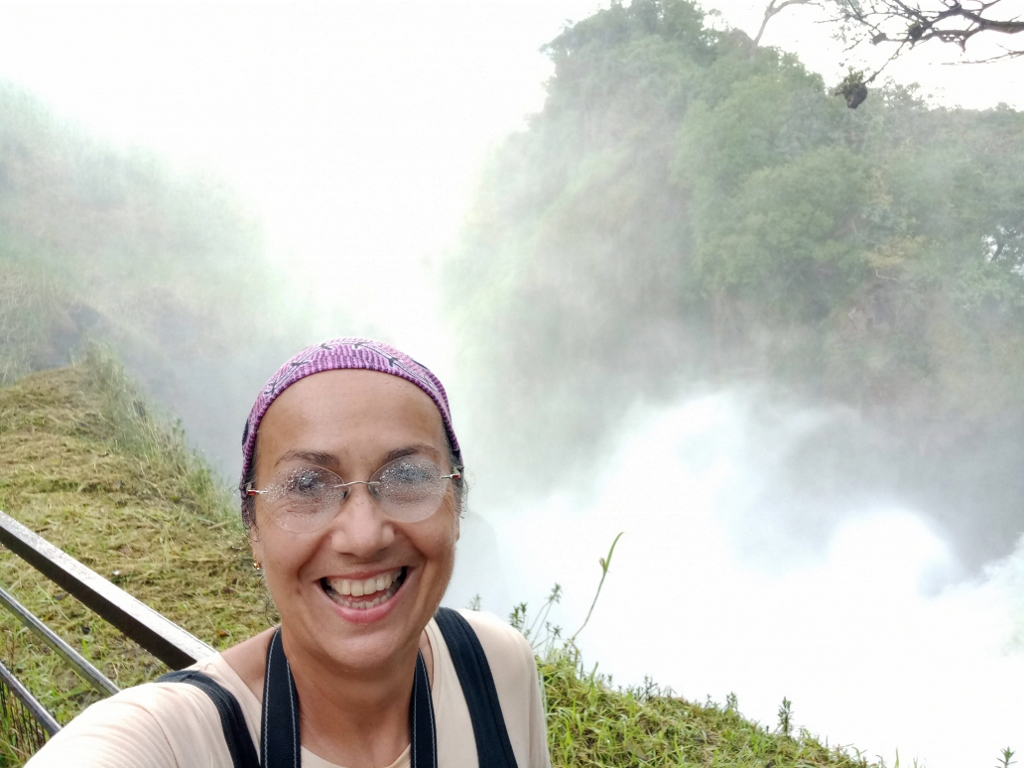 At the Murchison Falls
At the Murchison Falls
Along the way, I made short video clips at several locations, which later, upon returning home, I turned into a short film about the Murchison Falls. Here it is:
Here we concluded our visits to the Murchison Falls National Park. In addition to the safari and the visit to the waterfalls, there is another popular way to explore the park and that is by taking a boat excursion along the Victoria Nile, all the way to near the falls themselves. Unfortunately, we didn’t have time to include that in our itinerary on this occasion. As I like to say, it's always good to leave something for the next visit. If I’m fortunate enough to return to this part of Uganda, I would certainly consider going on that boat excursion.
On the way back to Masindi, we were once again greeted by baboons, but this time we didn’t have any bananas to toss their way.
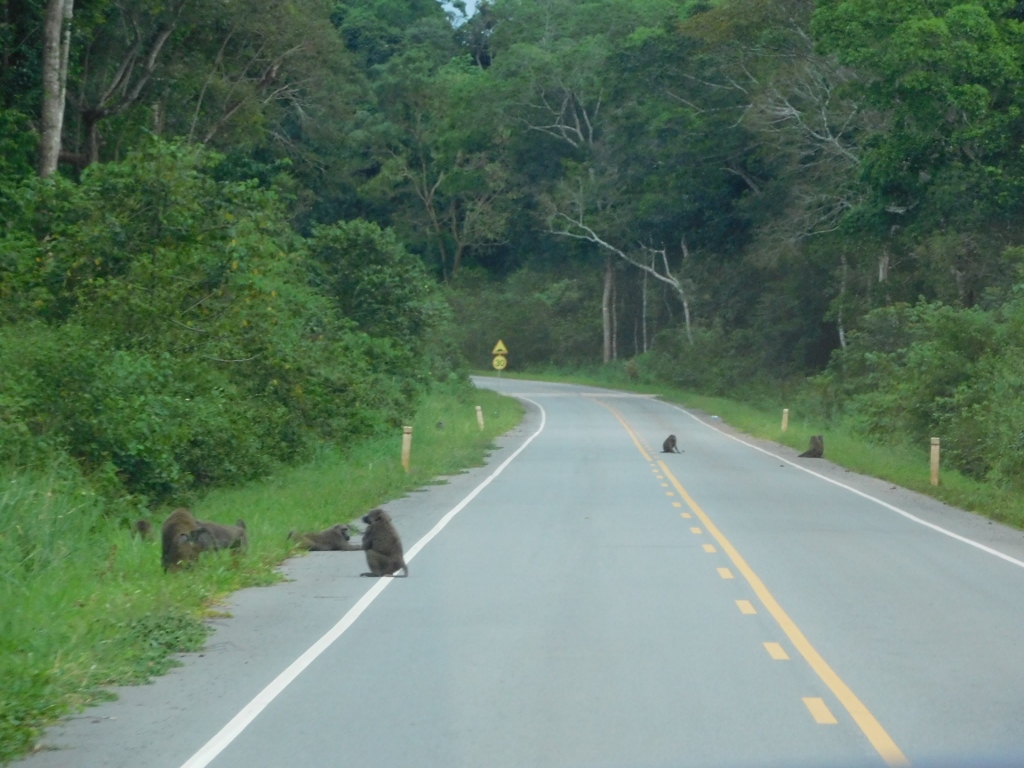 Baboons on the road
Baboons on the road
I regret not capturing the traffic sign warning of monkeys on the road, but I managed to take a photo of another sign indicating that it is a place where elephants are known to cross the road.
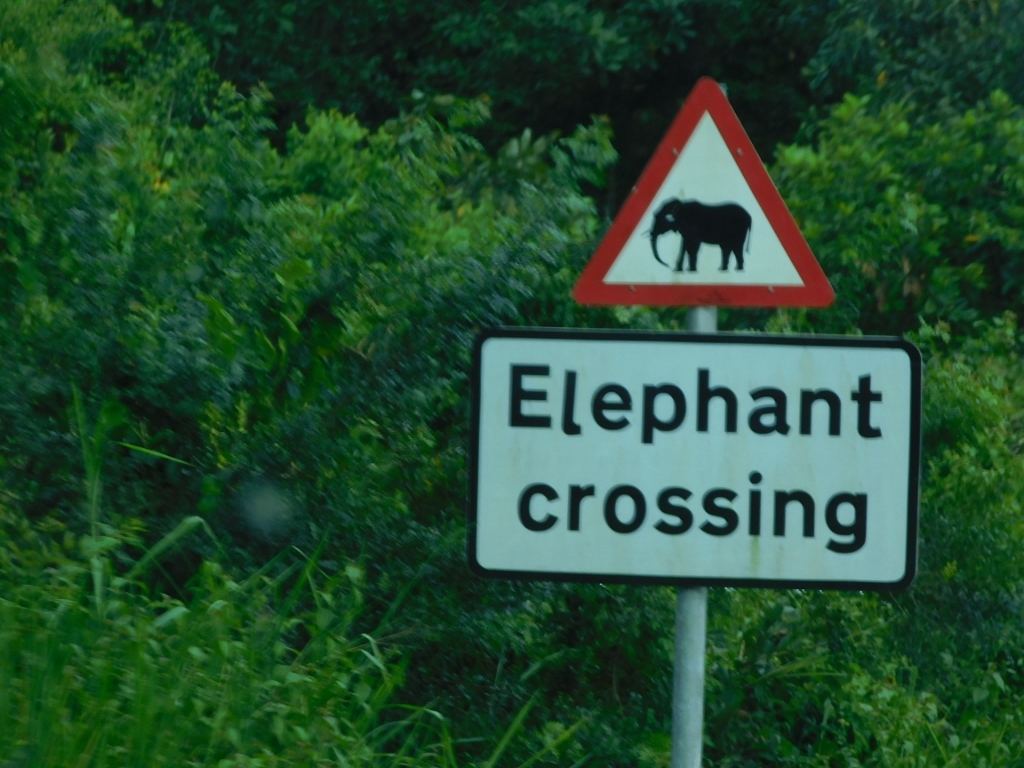 Sign by the road
Sign by the road
Once the work in Masindi was completed, I set out with the clients towards Entebbe to await the return flight, with the plan to make a brief stop in Kampala first.
By the way, on the way from Masindi to the capital of Uganda, Kampala, there is a turnoff for the Ziwa Rhino Sanctuary. It is a private reserve working to increase the population of southern white rhinos with the goal of eventually reintroducing them into the wild. Namely, during the eighth and the ninth decades of the 20th century, all rhinos in Uganda were either exterminated or smuggled out of the country. As of October 2023, from what I’ve heard, there were around 40 rhinos in the sanctuary, making it a highly successful project.
As we approached Kampala, especially when we reached its suburbs, I was fascinated by the urban scenes along the road. Having been surrounded by nature in the past few days or briefly exploring a small town, I was now thrilled by the picturesque details at the entrance to this vast city. Kampala has almost 2 million inhabitants and if you include the suburbs, nearly 7 million people live there.
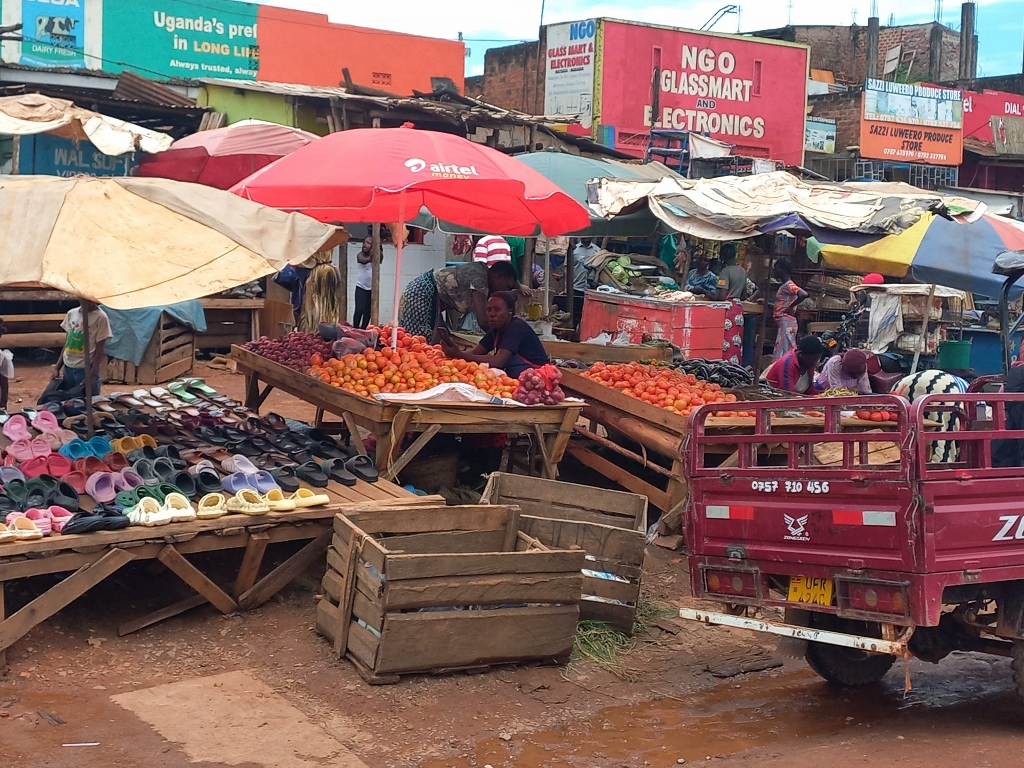 North parts of Kampala
North parts of Kampala
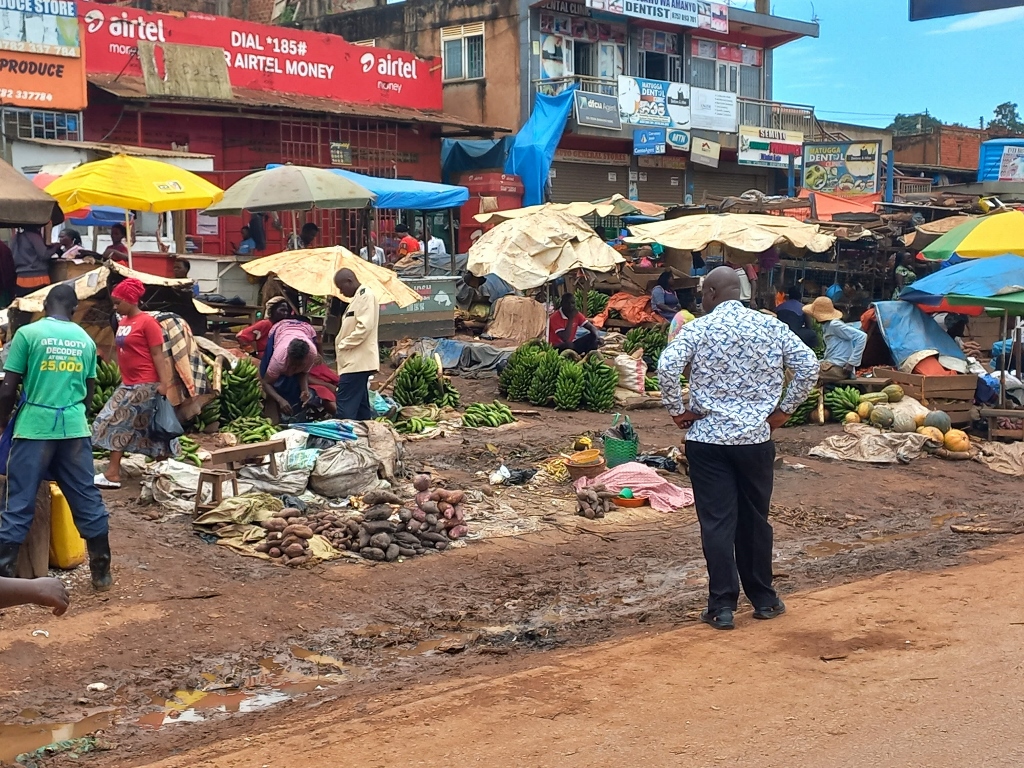 North parts of Kampala
North parts of Kampala
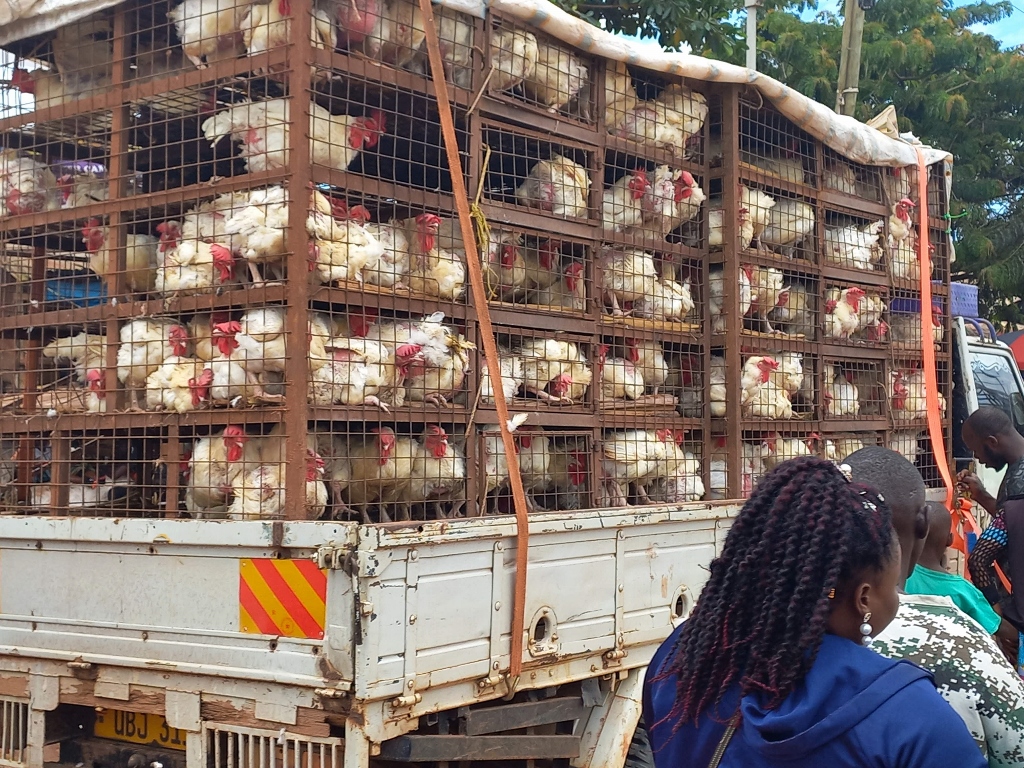 North parts of Kampala
North parts of Kampala
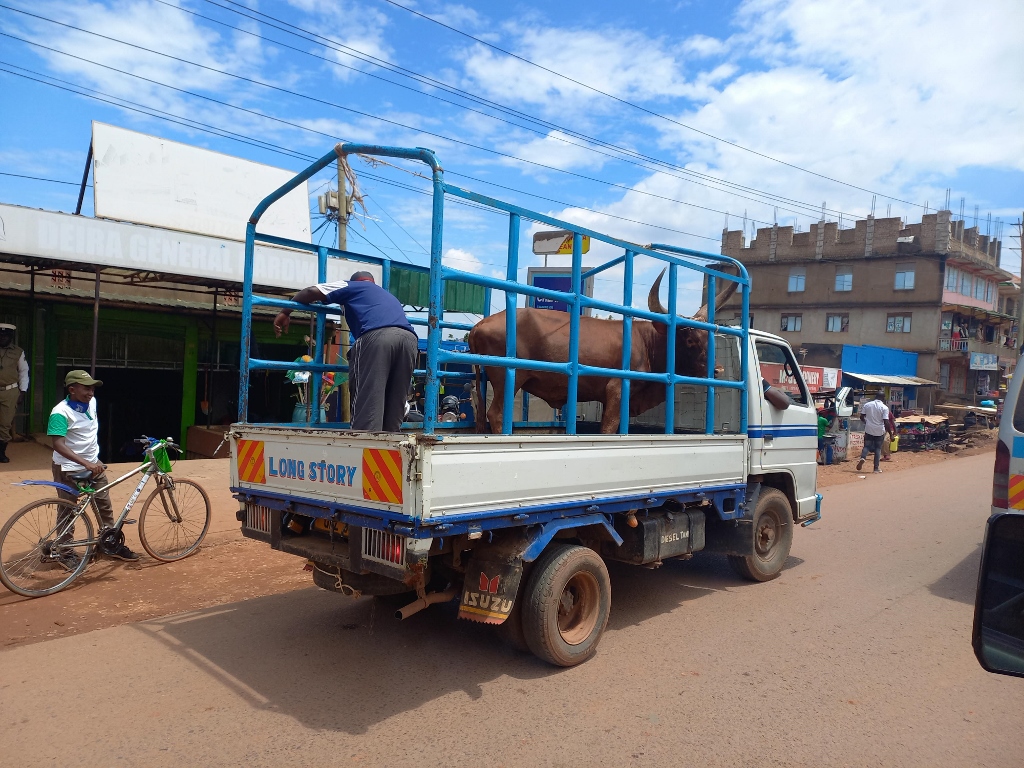 North parts of Kampala
North parts of Kampala
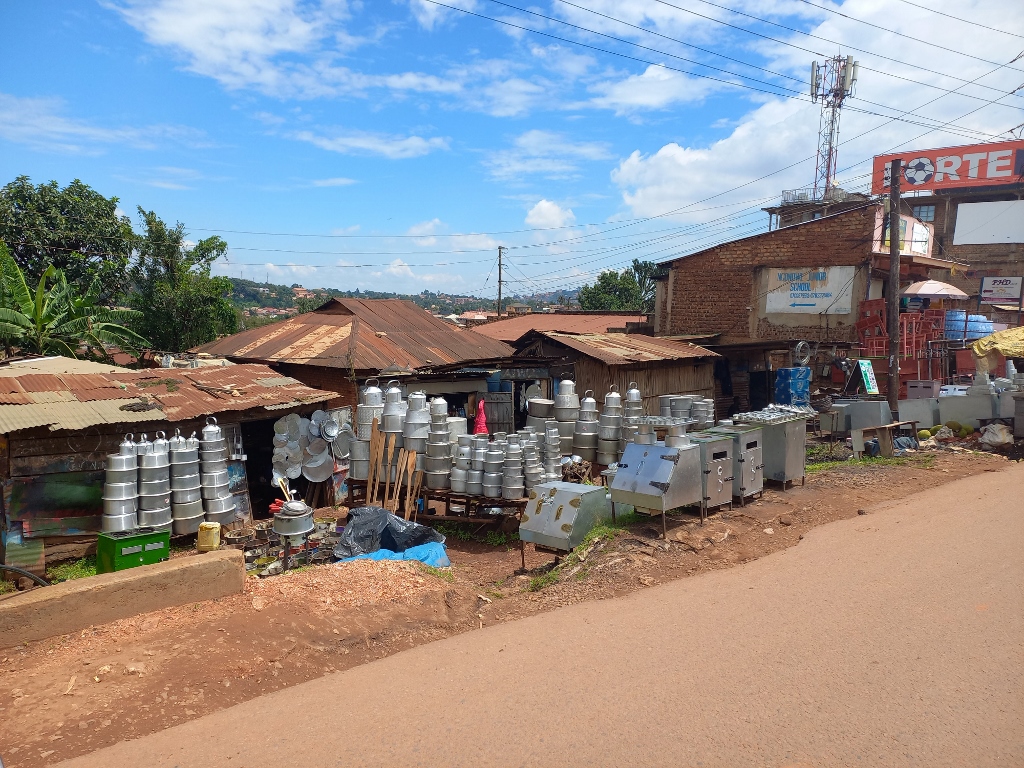 North parts of Kampala
North parts of Kampala
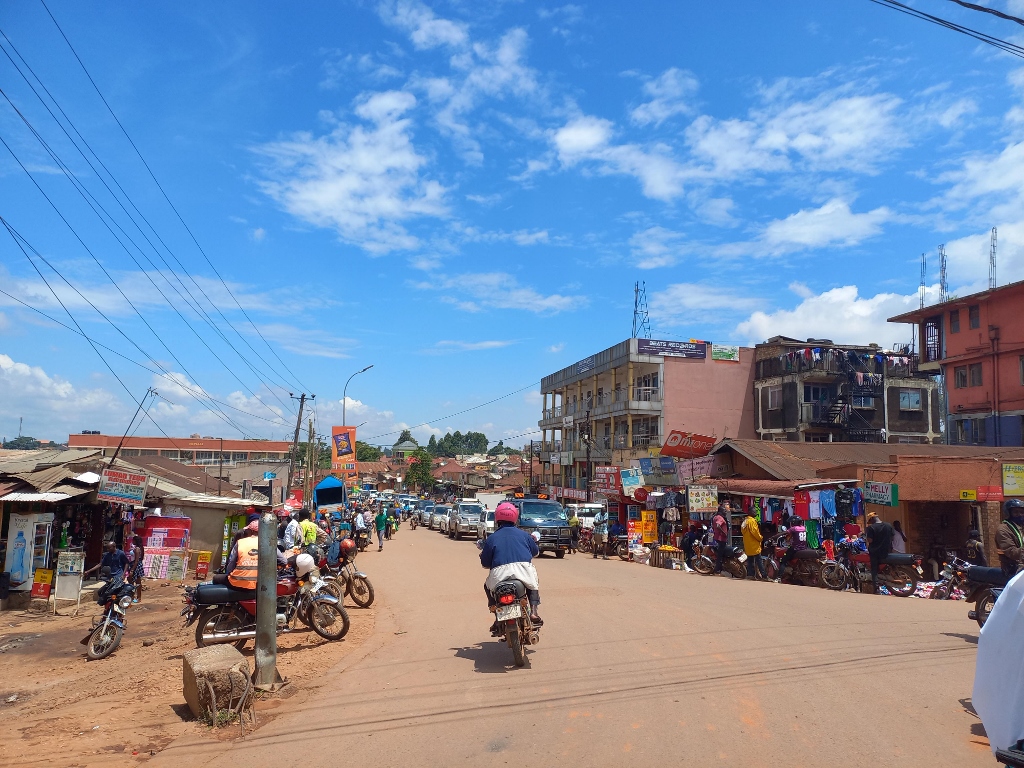 North parts of Kampala
North parts of Kampala
Like all major cities worldwide, Kampala also suffers from heavy traffic jams. On the other hand, we stopped here briefly just in order to go to a souvenir market. This essentially meant that we were only looking to get to one of the several souvenir markets, so there wasn’t actually a tour of the city and its urban centre.
Specifically, we went to the Buganda Road Crafts Market, so I captured only a snippet of the city, with the market being the main focus.
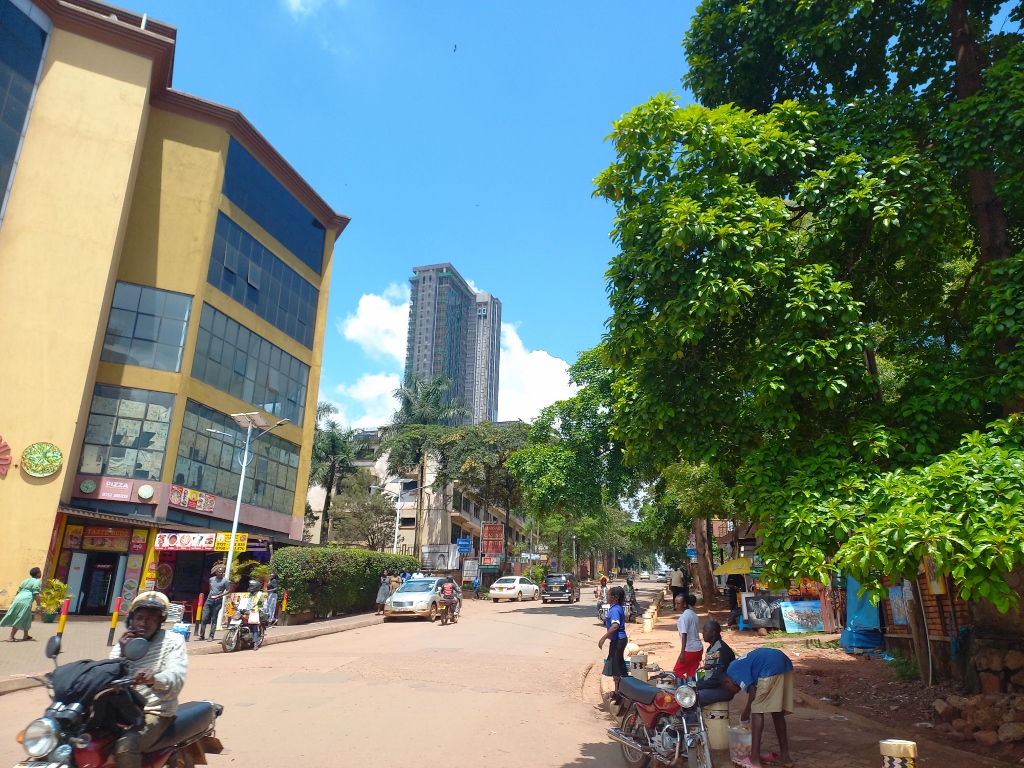 Kampala
Kampala
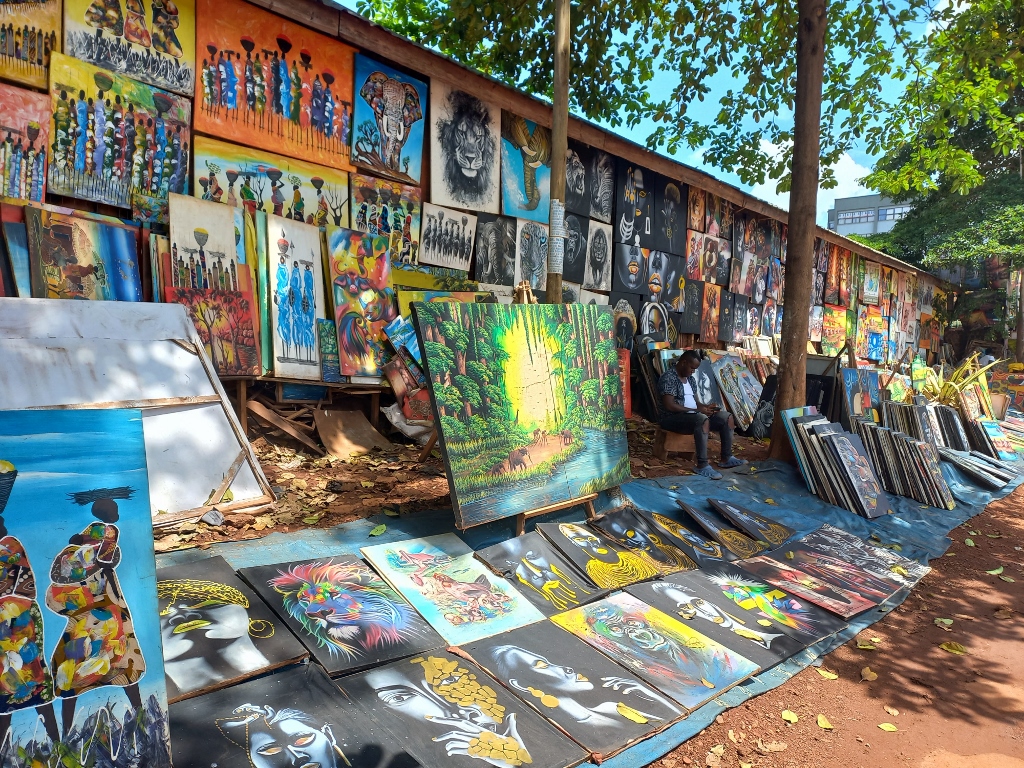 Buganda Road Crafts Market
Buganda Road Crafts Market
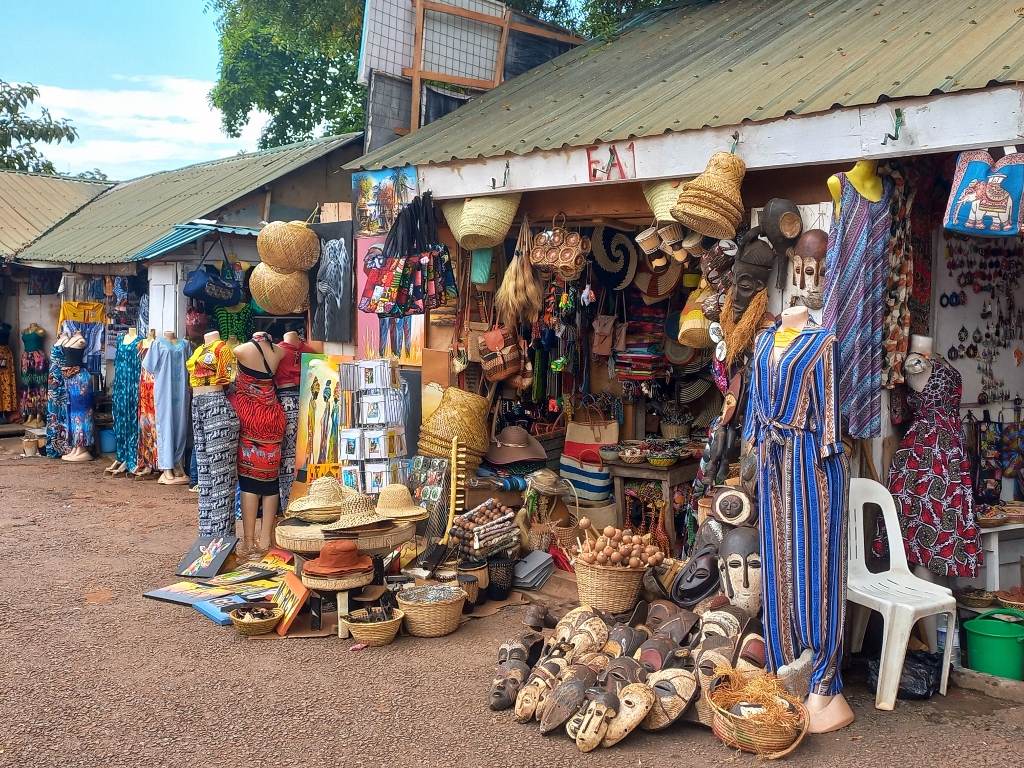 Buganda Road Crafts Market
Buganda Road Crafts Market
What I also spotted was a whole flock of marabou storks soaring over the city.
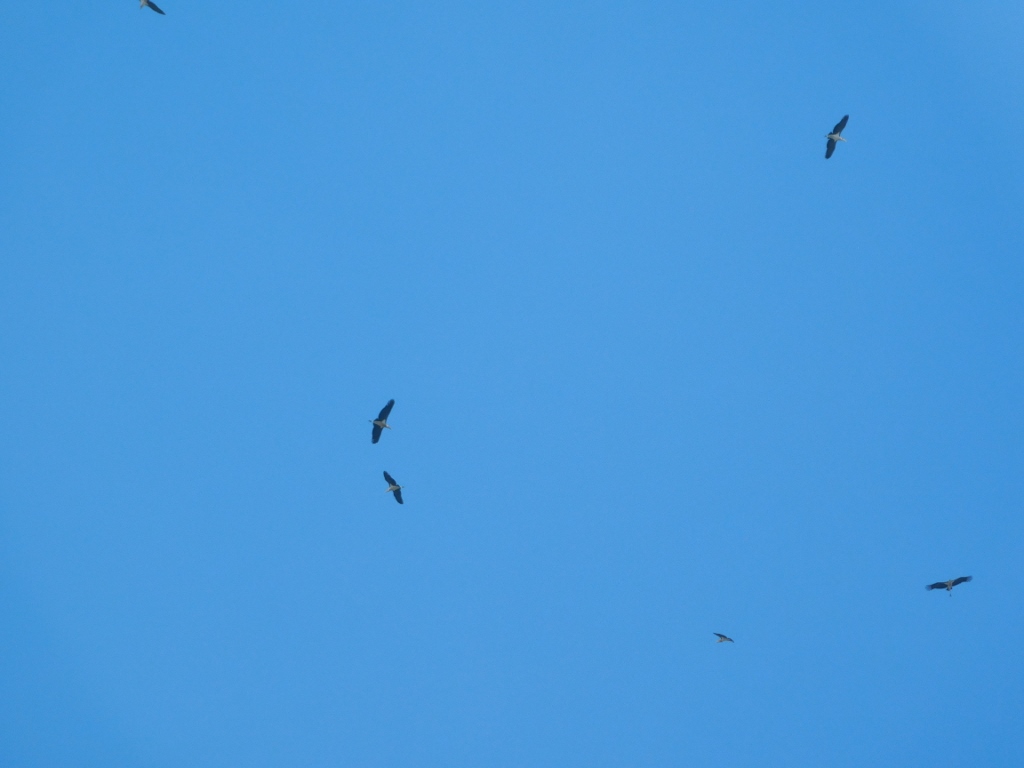 Marabou storks in the sky above Kampala
Marabou storks in the sky above Kampala
After buying what we wanted, we then moved on to Entebbe, a city on the shores of Lake Victoria about 35 km away from Kampala.
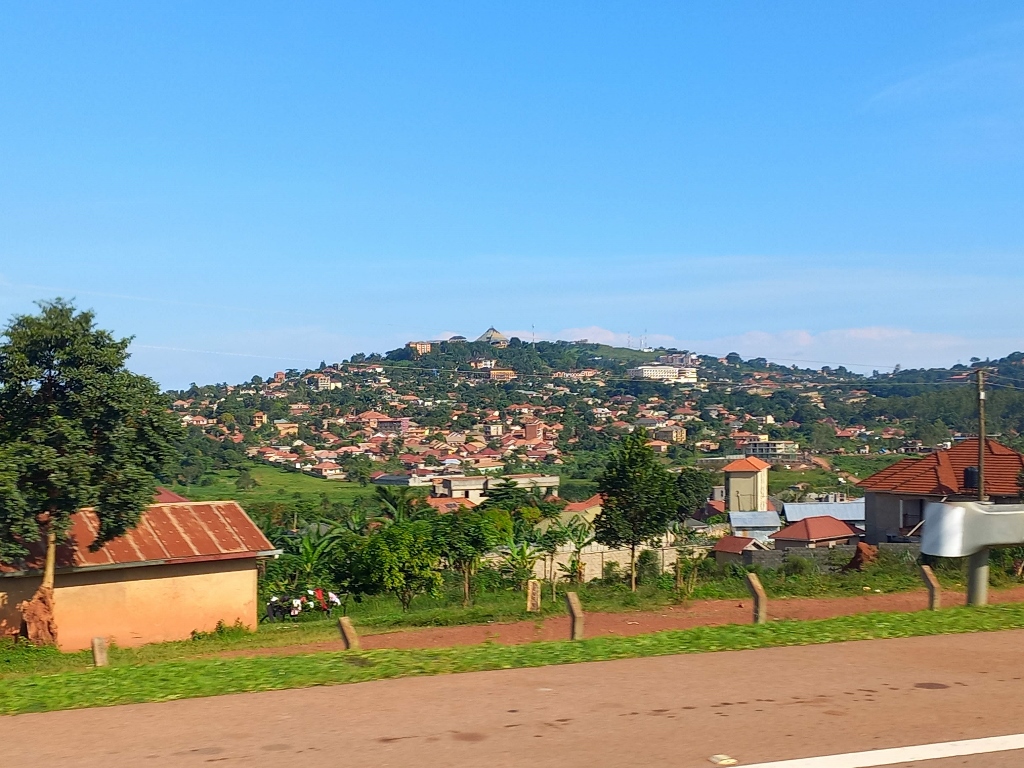 On the way from Kampala to Entebbe
On the way from Kampala to Entebbe
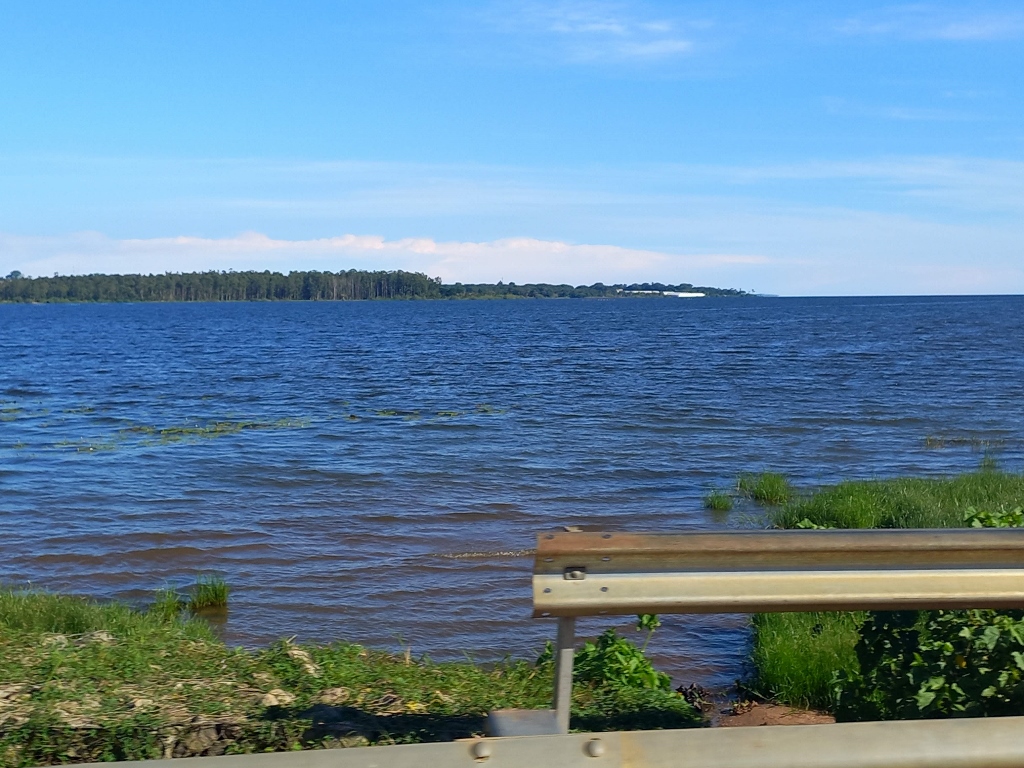 Lake Victoria
Lake Victoria
In Entebbe, there is an international airport, so we decided to spend the night there and we had almost the entire next day at our disposal. To start with, we bid farewell to Susan, our wonderful host who accompanied us up to this point.
The next morning, I spotted a beautiful hadada ibis (Bostrychia hagedash) on the hotel lawn. The day looked promising.
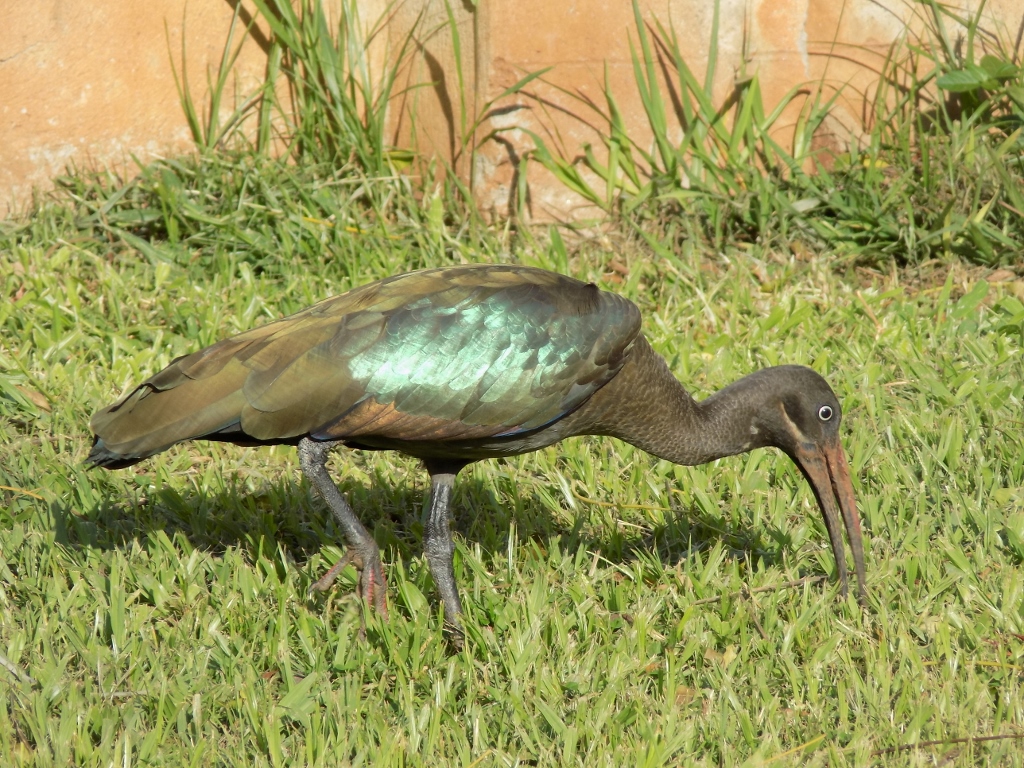 Hadada ibis
Hadada ibis
Namely, the plan was to visit a place that serves as the national zoo. Generally speaking, I’m not particularly enthusiastic about zoos, although I can see their educational value. However, it was explained to me that this place was actually the Uganda Wildlife Conservation Education Centre and was more like a safari park than a typical zoo.
The agreement was to embark on a guided tour to see some animals up close. To start with, I spotted an African fish eagle (Haliaeetus vocifer) soaring above us and I also frequently saw (yellow-billed kites) (Milvus aegyptius).
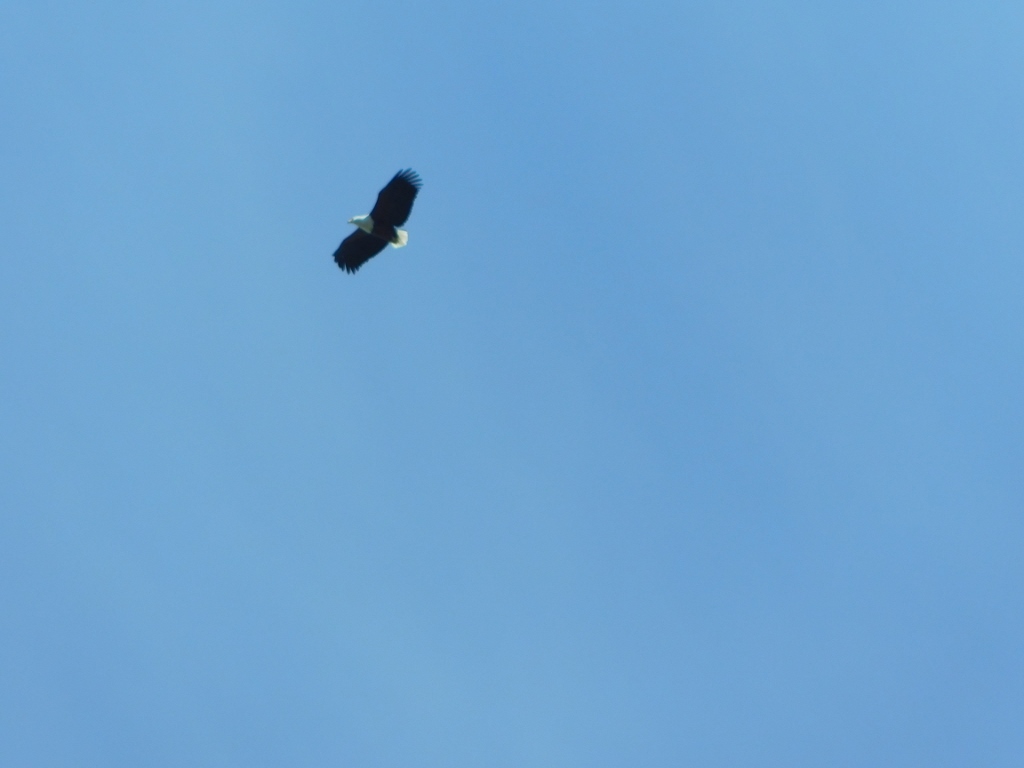 African fish eagle
African fish eagle
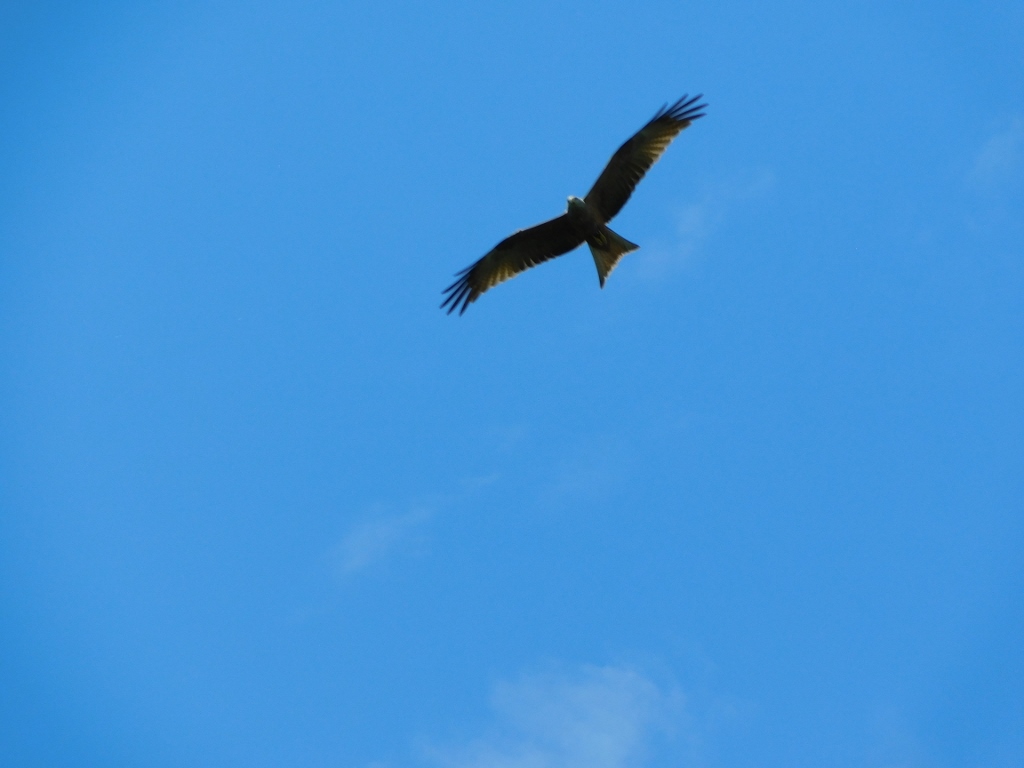 Yellow-billed kite
Yellow-billed kite
There are various animals here; I even saw a tiger, which confused me since tigers are not native to Africa. Our guide explained that this centre primarily serves an educational purpose, so they have accepted having a tiger for that reason. He also later explained that the centre houses animals found injured in the wild, rescued from trafficking or sent by owners for rehabilitation. According to the guide, none of the animals were taken healthy from the wild to be placed here.
During the couple of hours of walking, I thoroughly enjoyed myself. However, my main criterion for taking photos was to capture as little human intervention as possible in the image. It was important for me to have an unobstructed view of the animal while avoiding fences or walls in the photo. This wasn’t always possible.
For example, one of the first animals I saw was an African golden cat (Caracal aurata). It was napping on a platform and there was a visible wall behind it. That couldn’t be avoided.
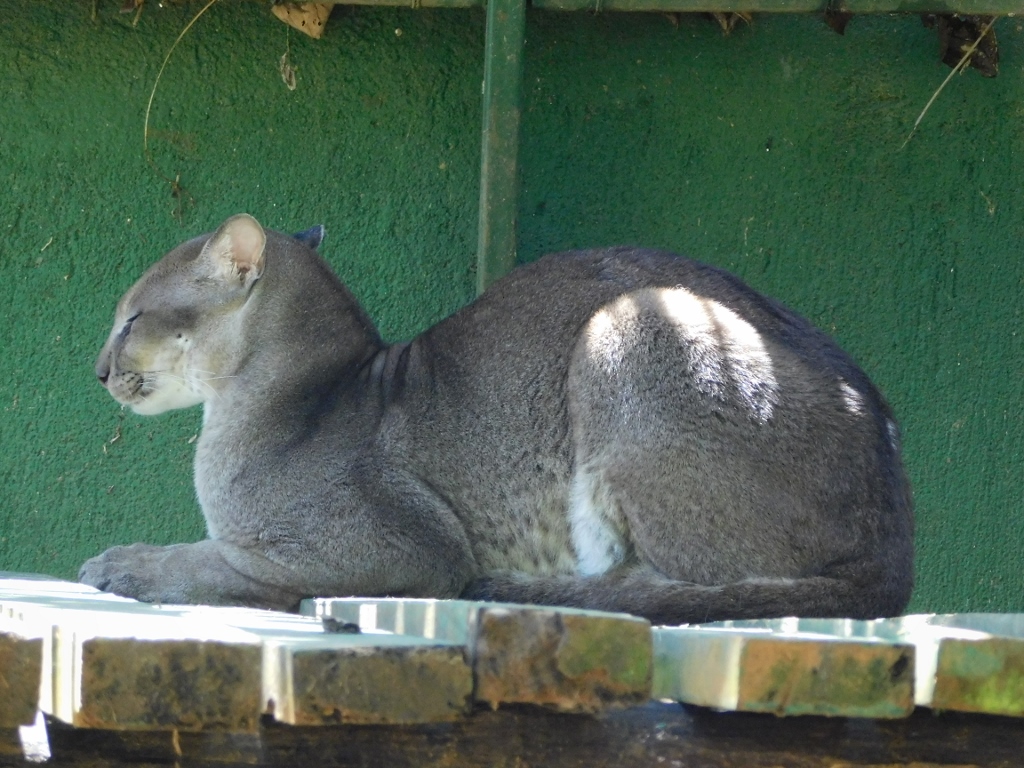 African golden cat
African golden cat
In the case of the serval (Leptailurus serval), the human intervention is evident in the wire fence behind the cat, but I think it still turned out well. On the other hand, I managed to capture a serval surrounded only by grass and flowers.
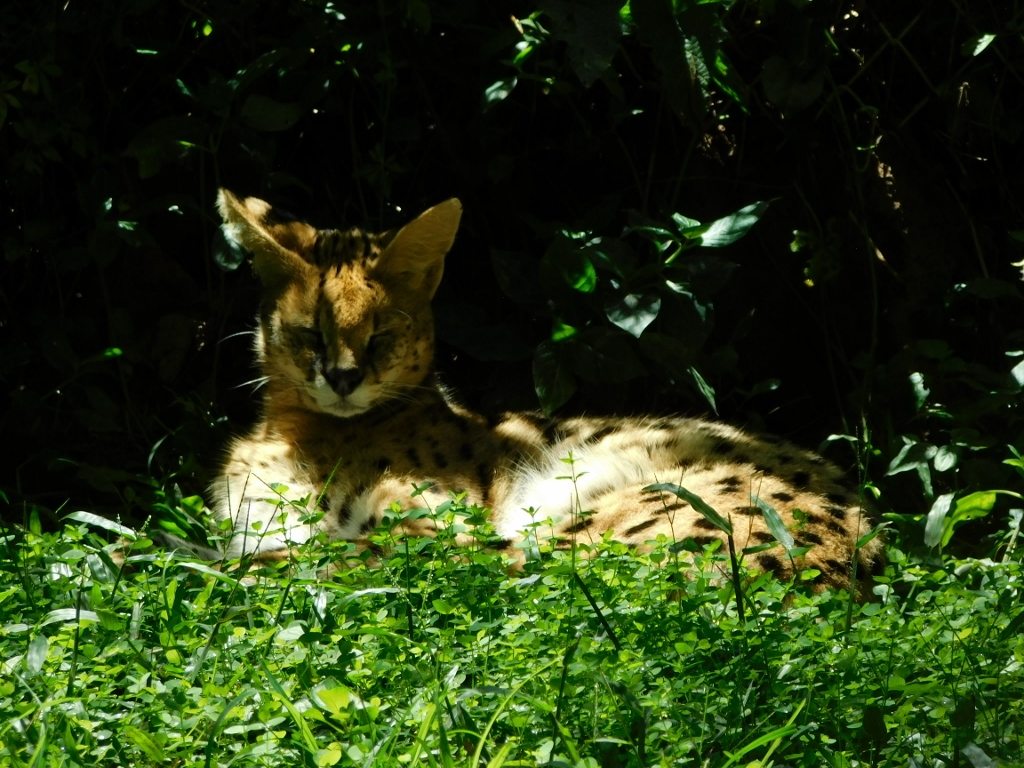 Serval
Serval
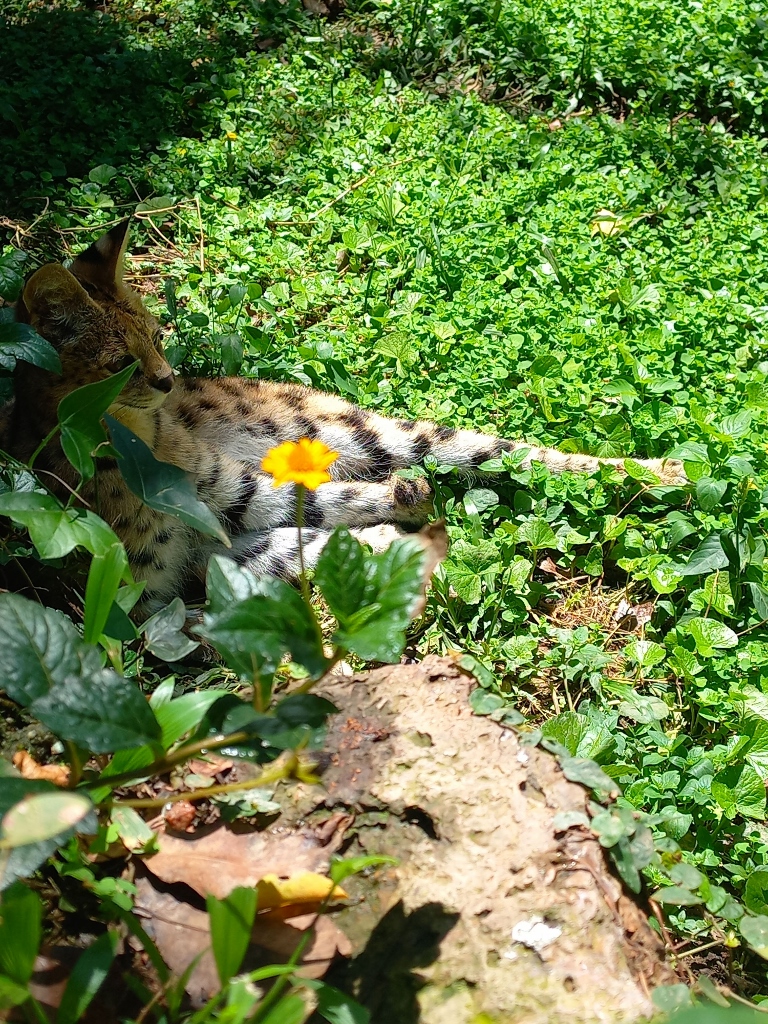 Serval
Serval
In this part of the centre with a higher concentration of smaller cats, there was also a caracal (Caracal caracal). Unlike its calm and napping neighbours, it nervously paced up and down.
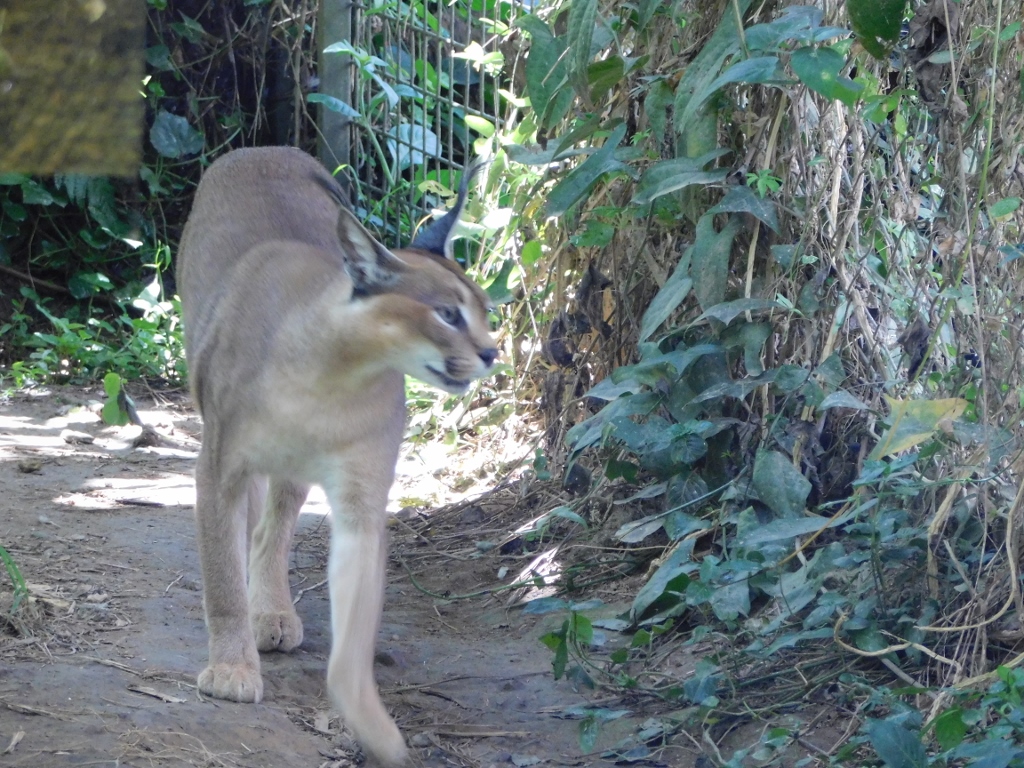 Caracal
Caracal
Not far from there, we reached the area with large cats. First, there was a cheetah (Acinonyx jubatus). Since our guide led us to the part where they feed the cats, he tried calling the cheetah to stand up and come closer to us. However, the cheetah completely ignored him and just cast a weary look in our direction. On the one hand, over time the animals have evidently become accustomed to their caretakers, who also serve as guides. On the other hand, the cheetah was entirely in the right. I wouldn’t have gotten up from the shade either if I had been in its place.
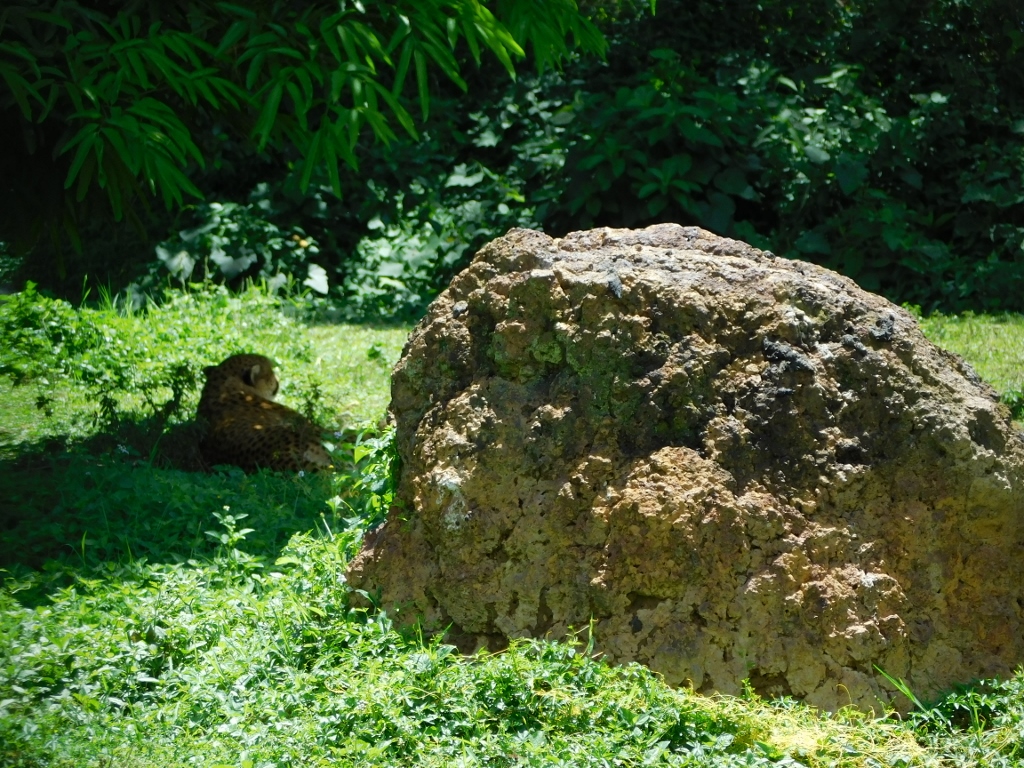 Cheetah
Cheetah
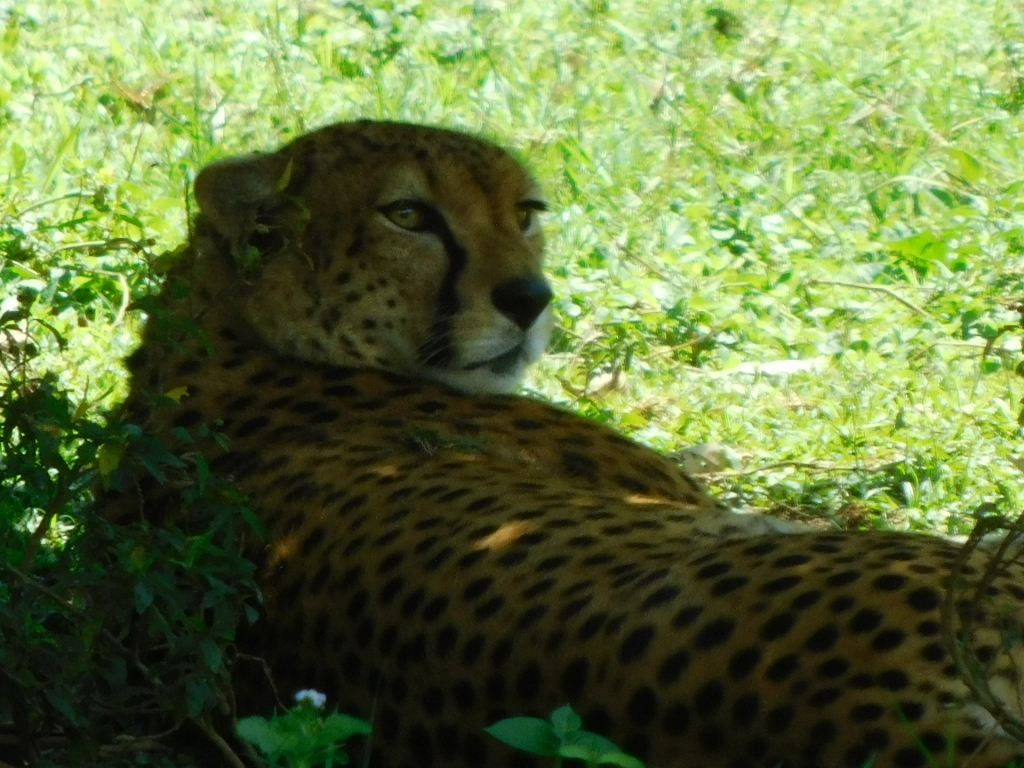 Cheetah
Cheetah
Then we came to a larger section where lions were located. There were a couple of lionesses strolling in the spacious area, but one was lying in the shade.
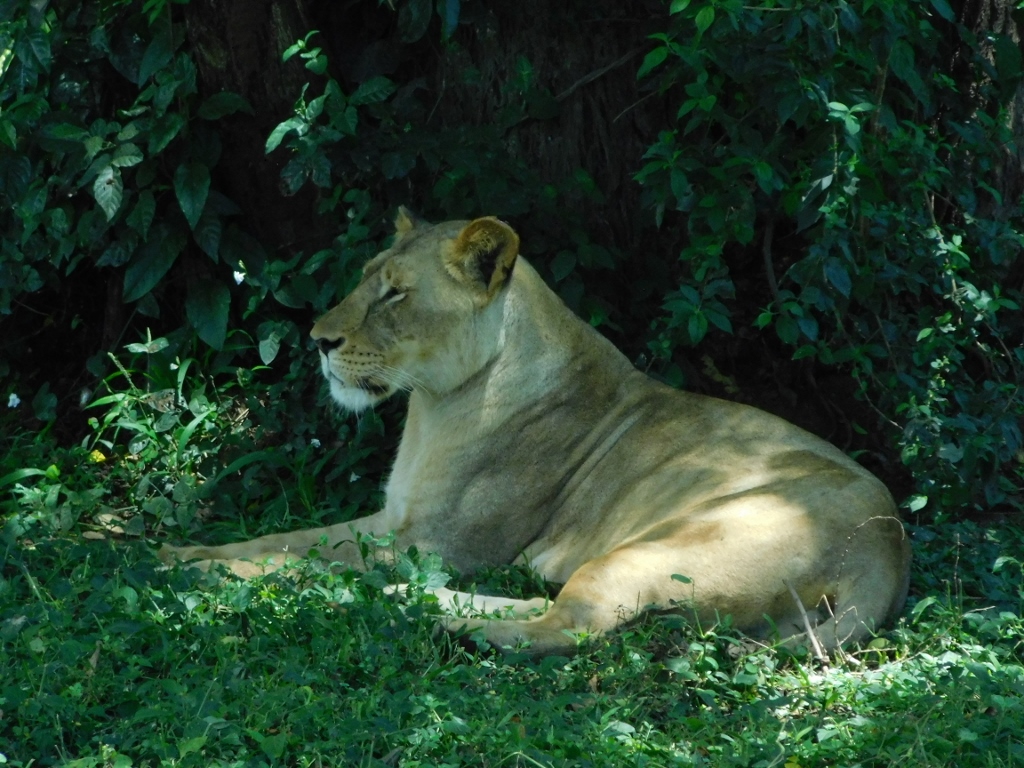 Lioness
Lioness
However, the male lion dominated the scene as he basked in the sun on a wooden platform.
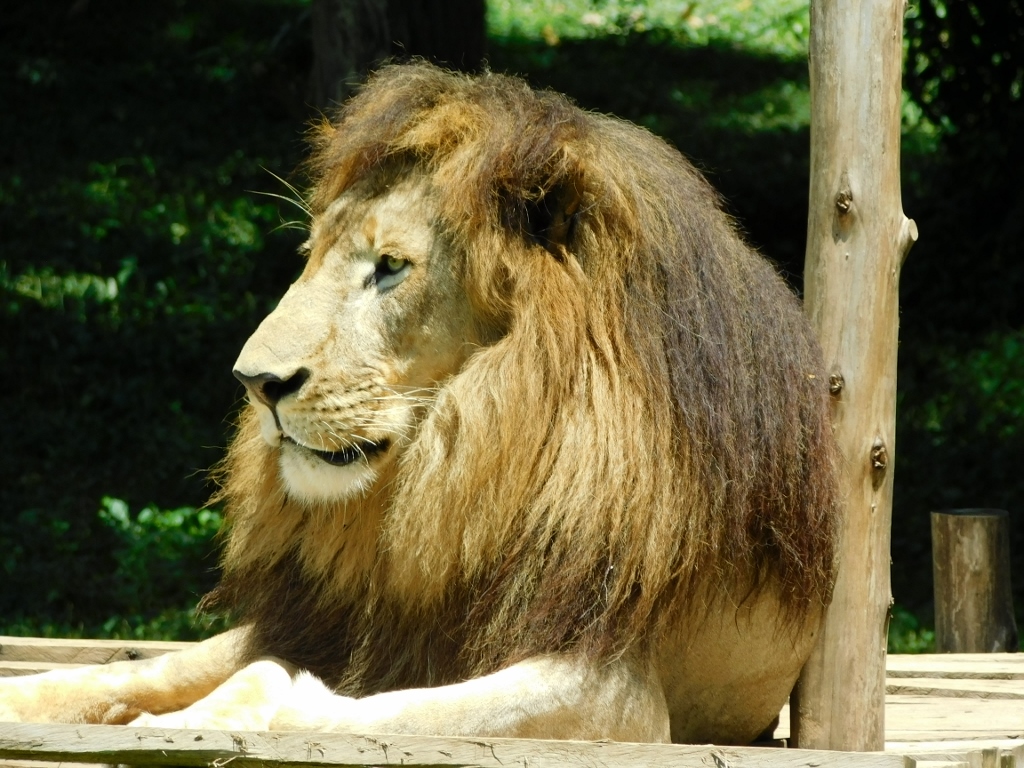 Lion
Lion
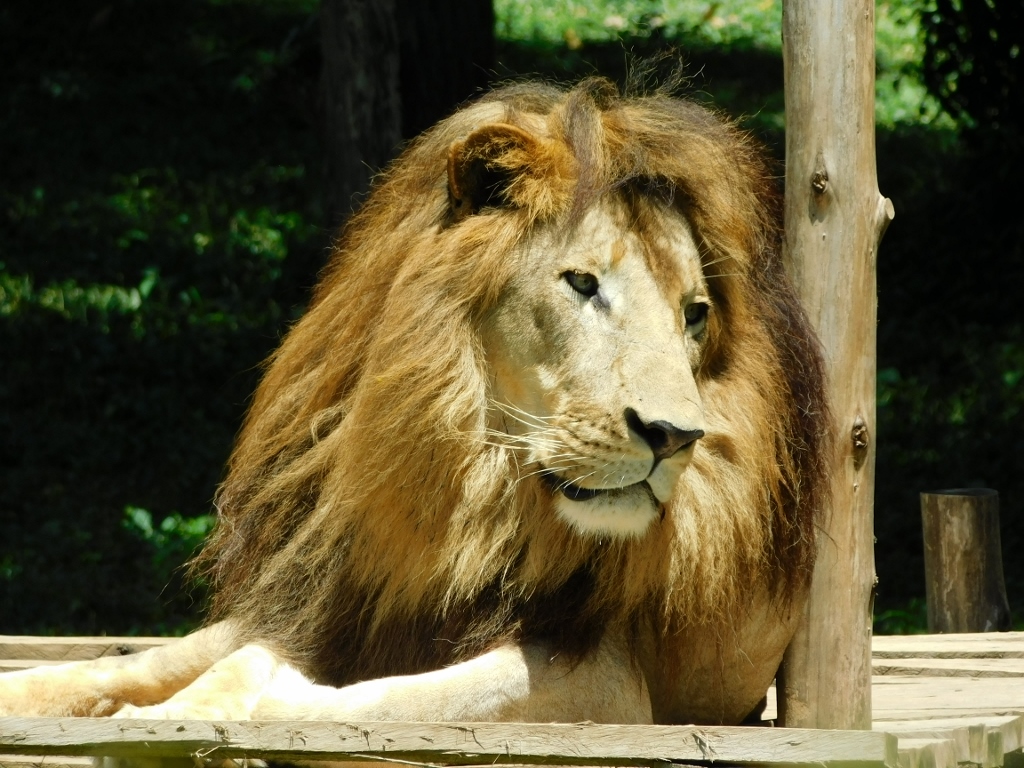 Lion
Lion
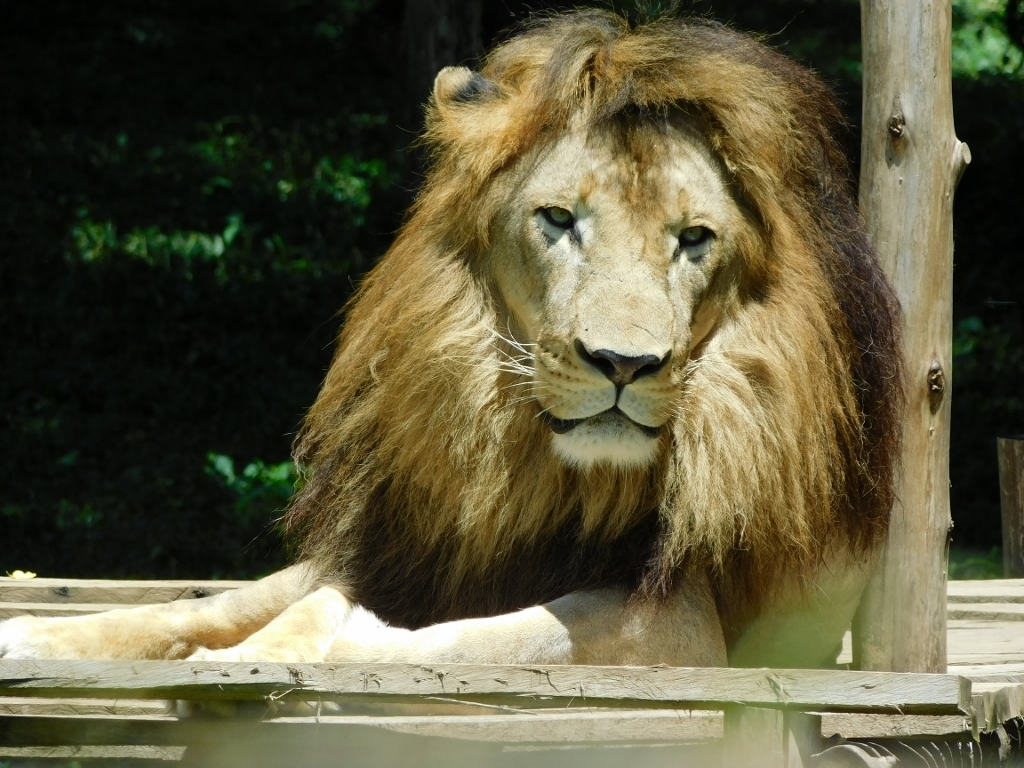 Lion
Lion
Then we reached the area with a rhinoceros. As I’ve mentioned earlier, Uganda currently has around 40 individuals of southern white rhinos (Ceratotherium simum simum) and, as far as I got it, this is one of them. When we approached the fenced area where it spends its time, the rhino was rolling in the mud but soon got up.
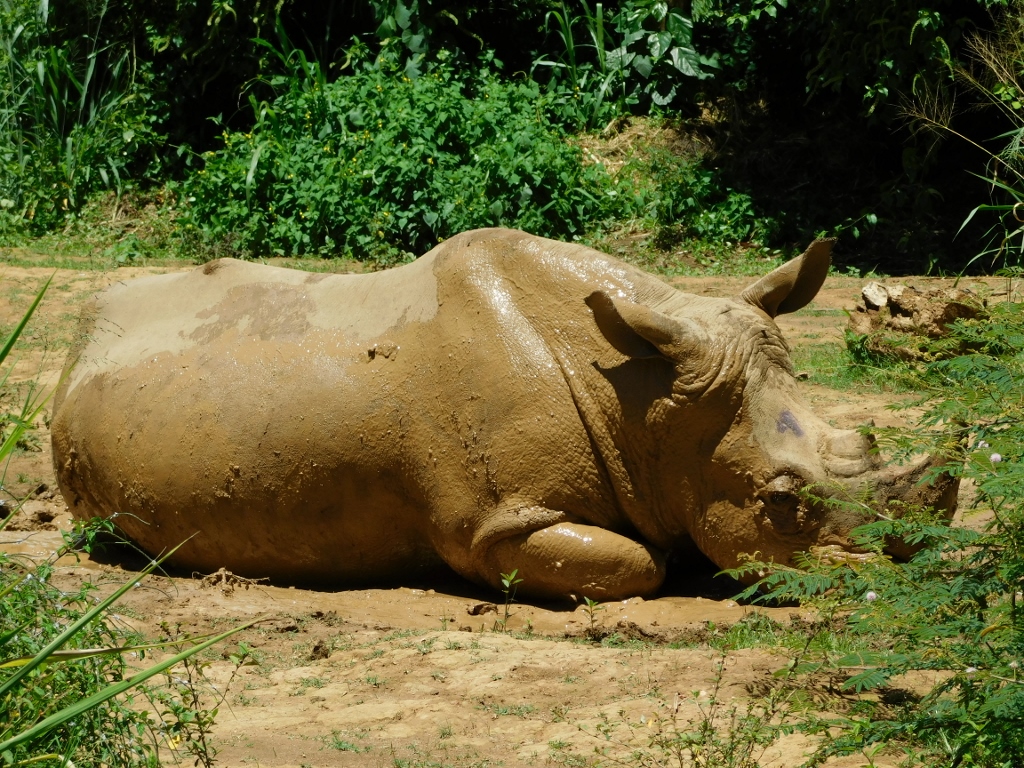 Rhino
Rhino
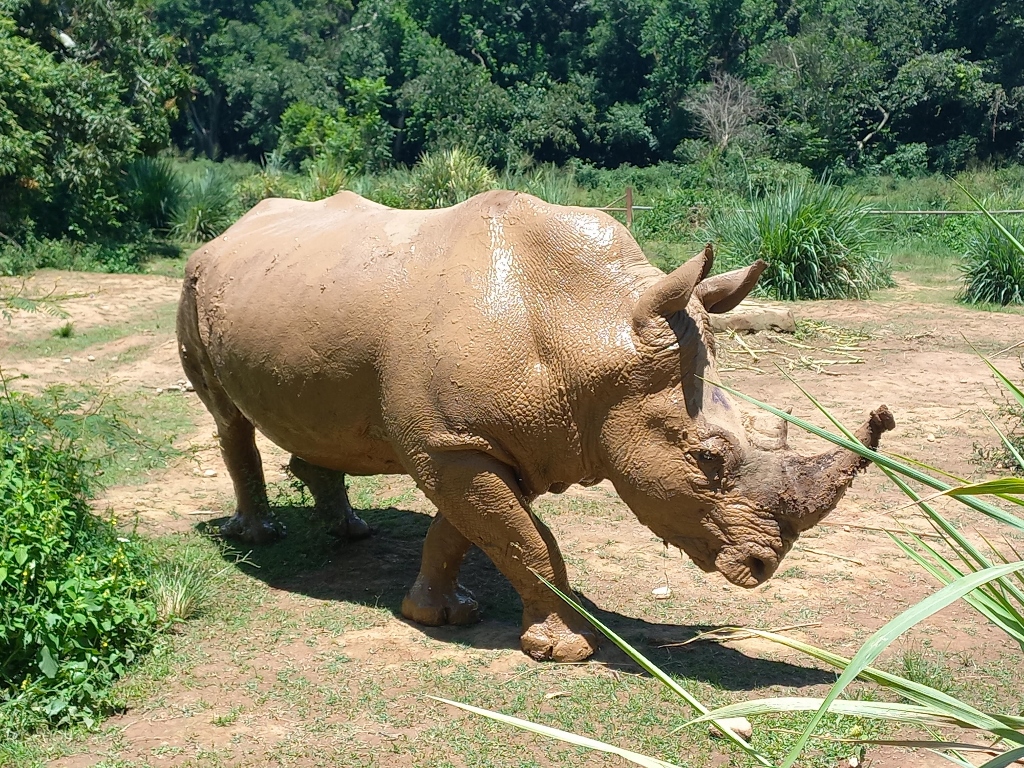 Rhino
Rhino
Since we were on a special tour here, the guide led us into an area not accessible to all visitors. However, the rhino was still separated from us by a fence. Unlike the cheetah, this rhino responded to the guide’s call and approached him. The guide then began tapping the rhino on the head. I asked the guide what was happening and he said it was a massage which, supposedly, rhinos like. I had to give it a try, but I quickly gave up because it felt strange to me to hit the poor animal, even though I didn’t do it forcefully. I preferred to pet it instead.
Near the rhinoceros, there was also an area where a leopard lived. As our guide explained, he was quite old, hence the large stomach that almost dragged along the grass. Poor leopard. Who knows what he has endured in his life?
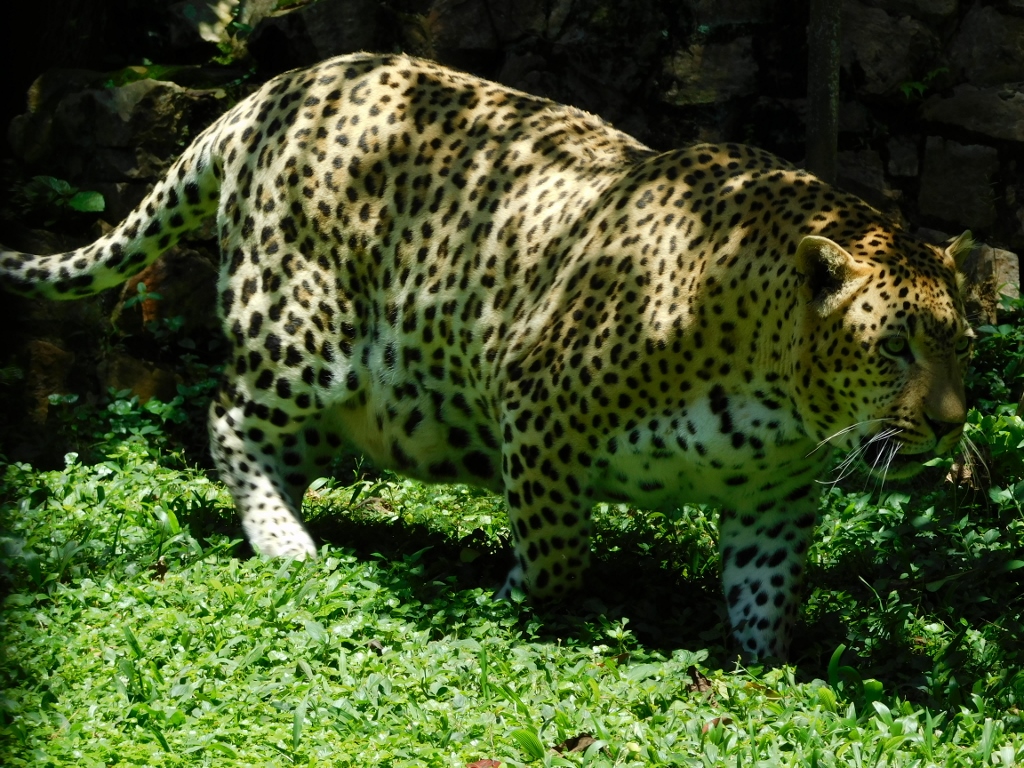 Leopard
Leopard
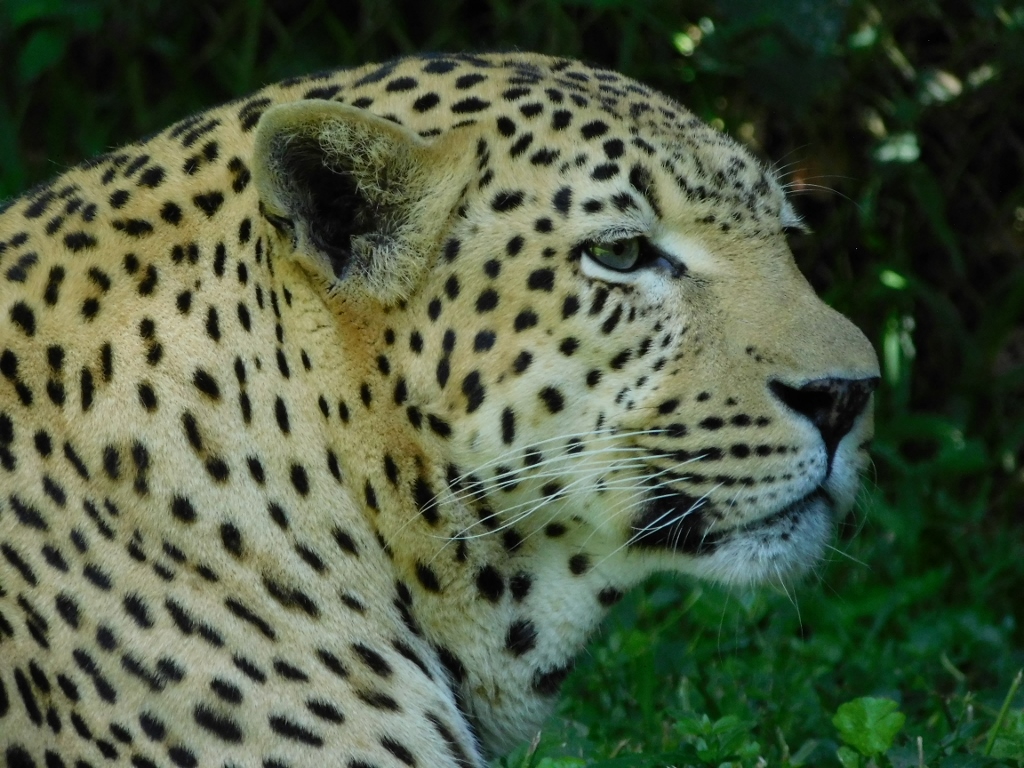 Leopard
Leopard
Next on our tour was a large area where some cattle and antelopes lived, along with ostriches and giraffes. We approached this area from a side where the wire fence was a bit crumpled at the top, making it easier for me to take photos over the fence. Initially, a female ostrich (Struthio camelus) was wandering around, but soon enough a young giraffe started approaching.
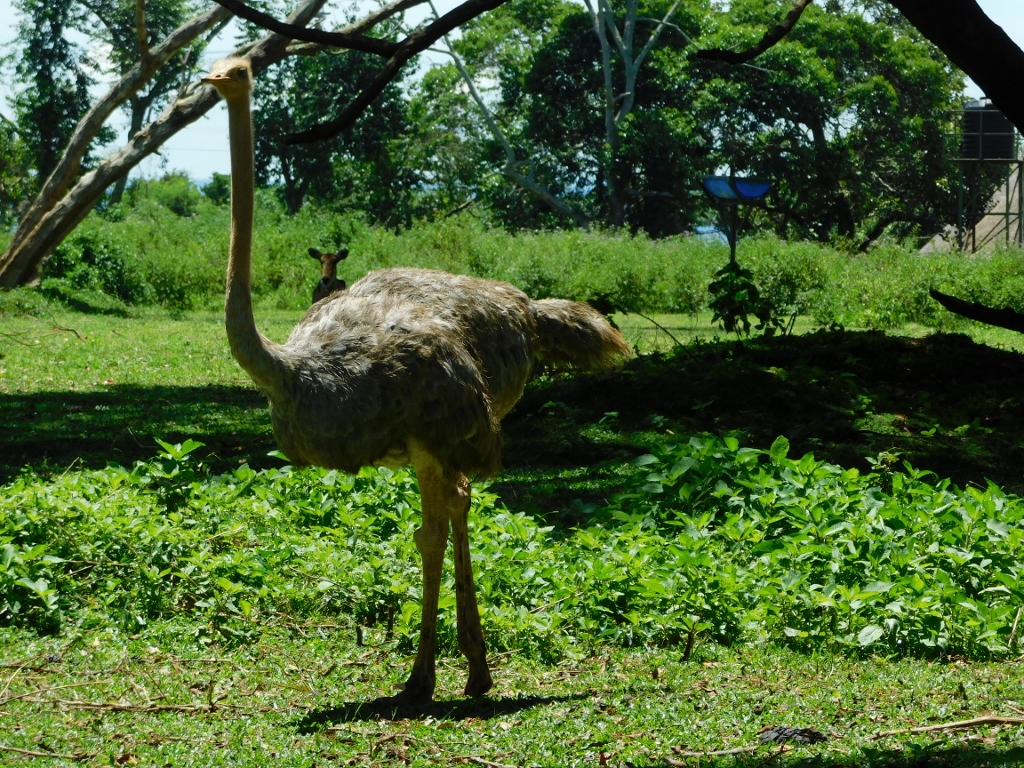 Female ostrich
Female ostrich
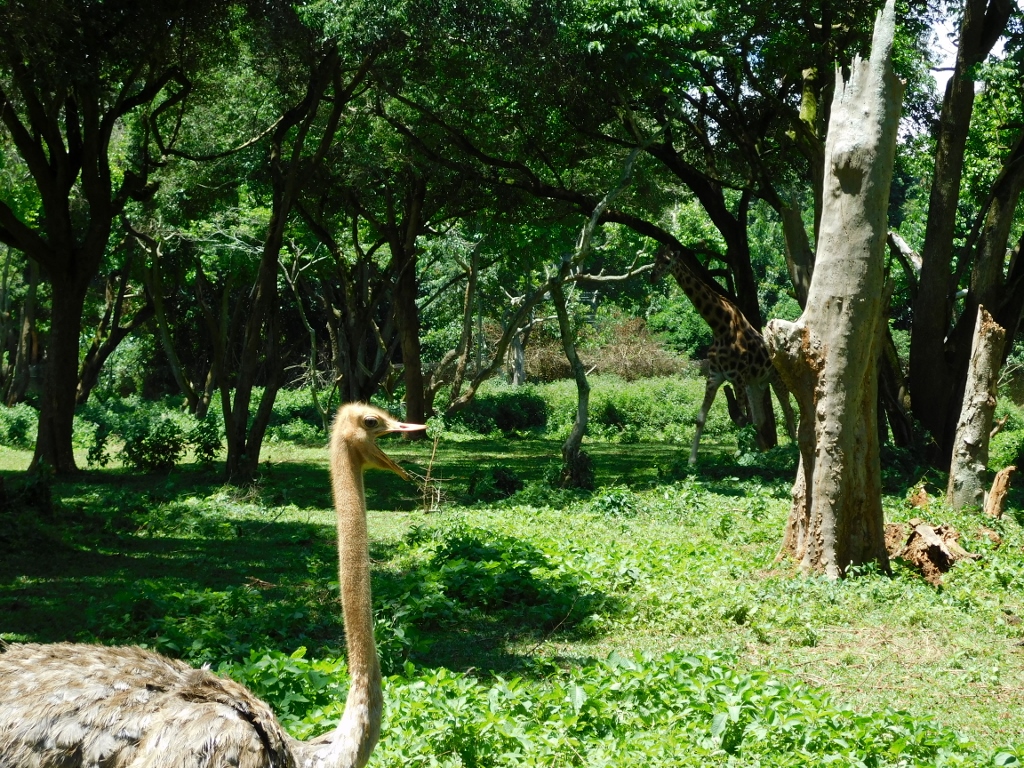 Female ostrich, while a giraffe is coming out from the shade on the right-hand side
Female ostrich, while a giraffe is coming out from the shade on the right-hand side
At first, the female ostrich posed alone and then the giraffe joined in.
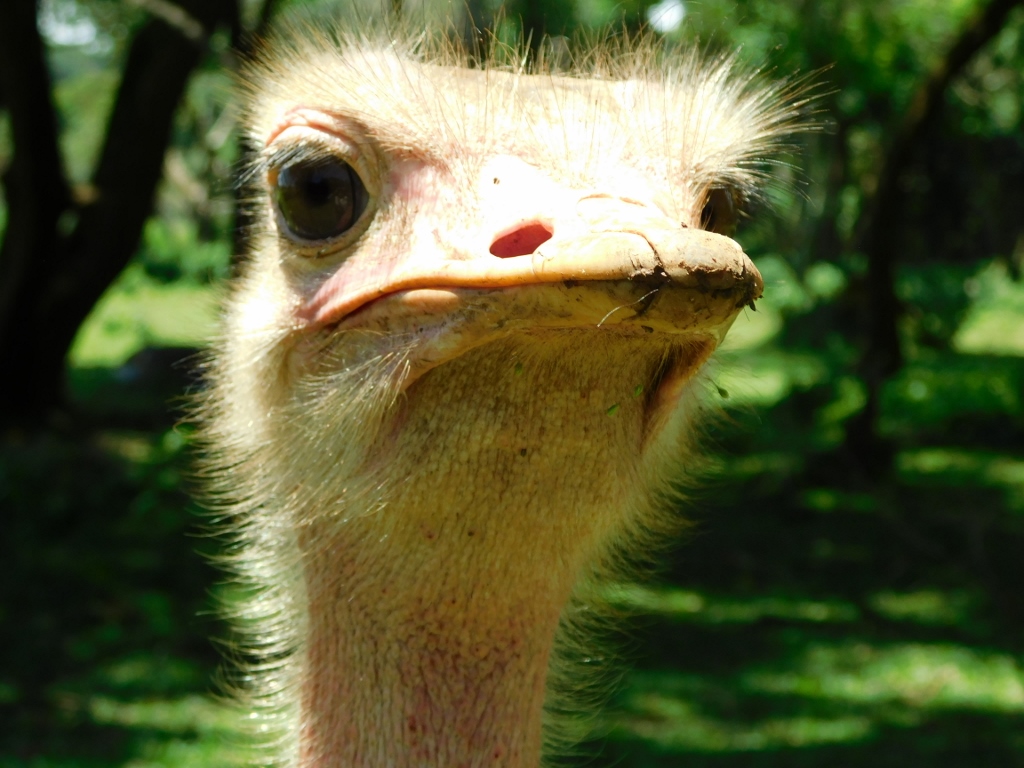 Female ostrich
Female ostrich
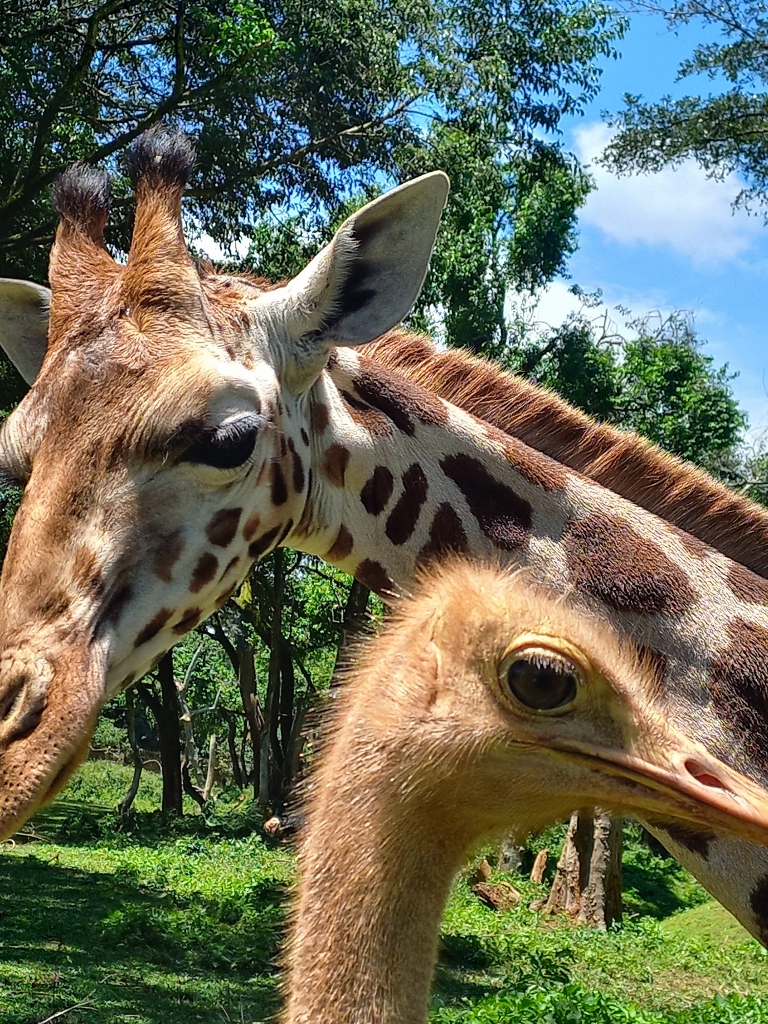 Young giraffe and female ostrich
Young giraffe and female ostrich
Soon enough, an adult giraffe also arrived and I captured it at a certain angle, making its eyes look almost like they were made up, giving a feminine touch.
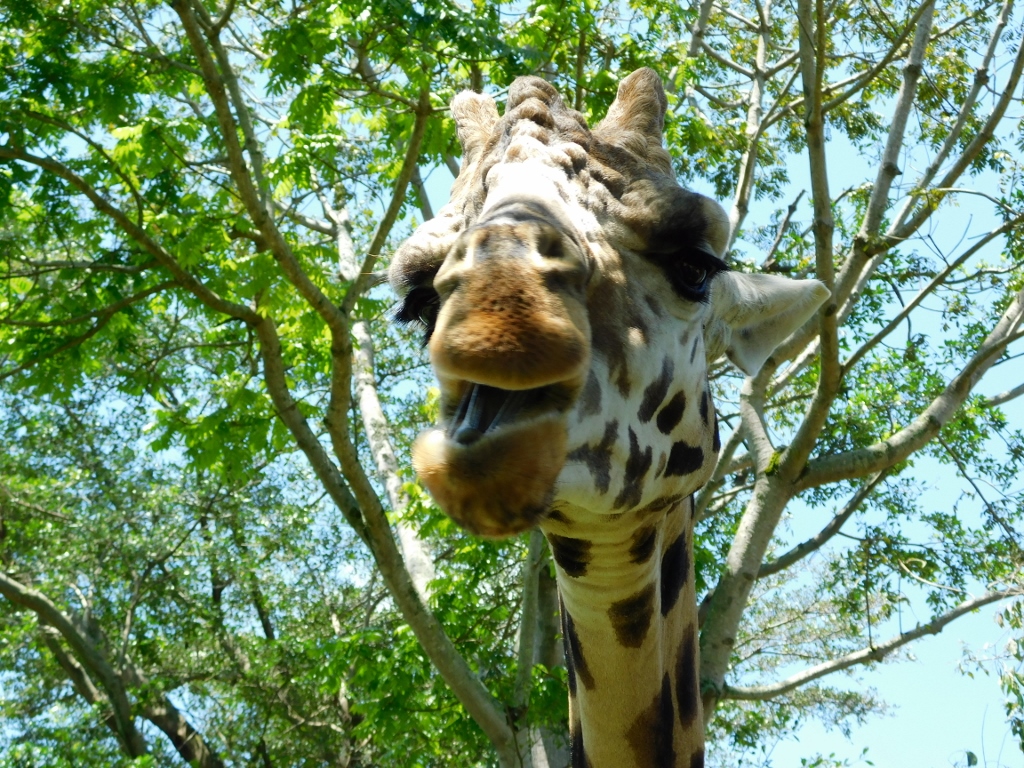 Adult giraffe
Adult giraffe
And then our guide showed us how we could feed them while taking photos. Of course, I had to give that a try, too.
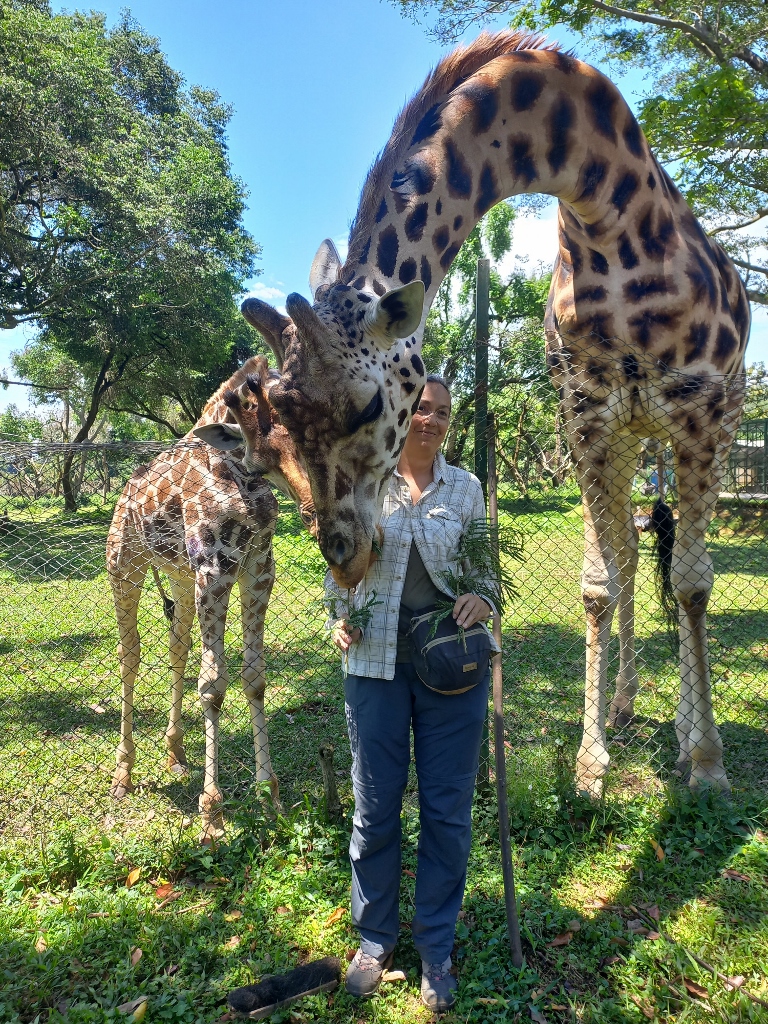 Feeding giraffes
Feeding giraffes
While all this was happening, there was also a male ostrich wandering around, but he simply “refused” to cooperate and I couldn't manage to take a nice photo of him.
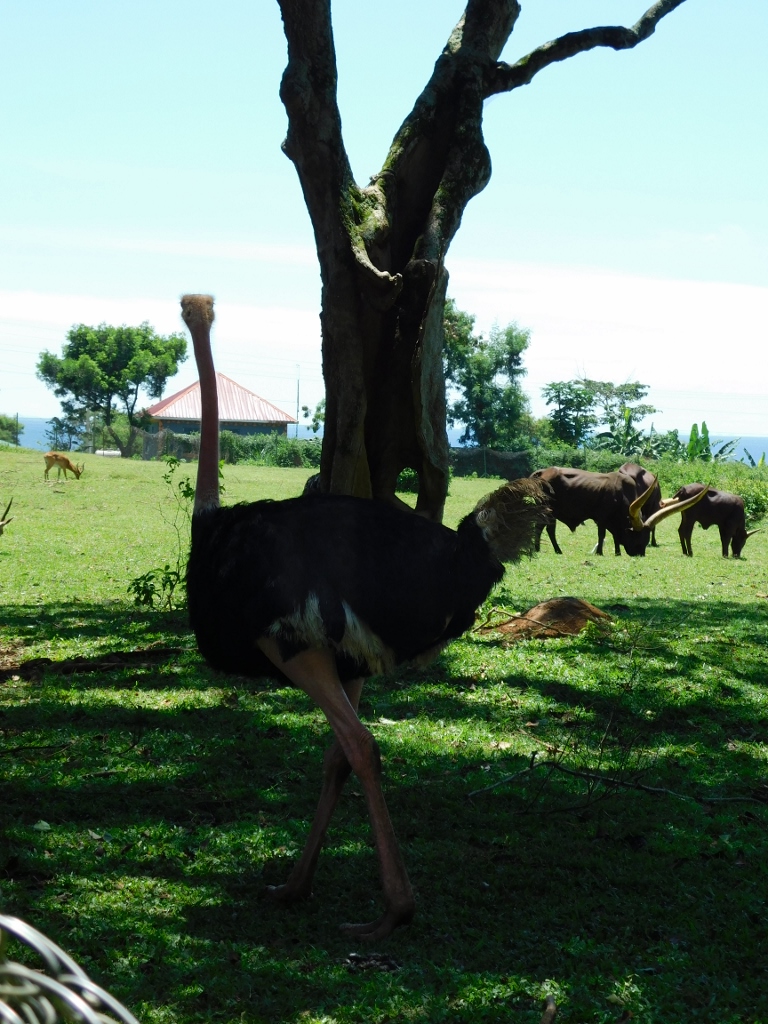 Male ostrich that would not pose for a photo
Male ostrich that would not pose for a photo
He even turned his back completely and went on to “pretend” to watch a few Ankole cattle that were peacefully grazing there. A cattle egret (Bubulcus ibis) joined them. In the background, Lake Victoria could be seen.
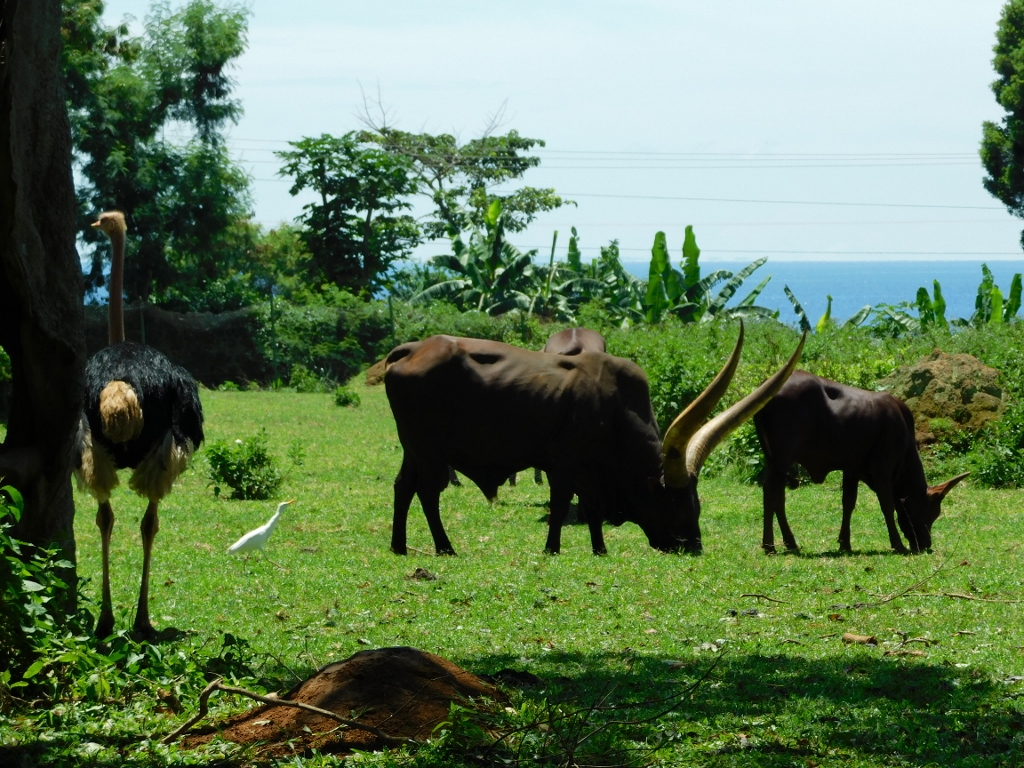 Male ostrich that would not pose for a photo and Ankole cattle
Male ostrich that would not pose for a photo and Ankole cattle
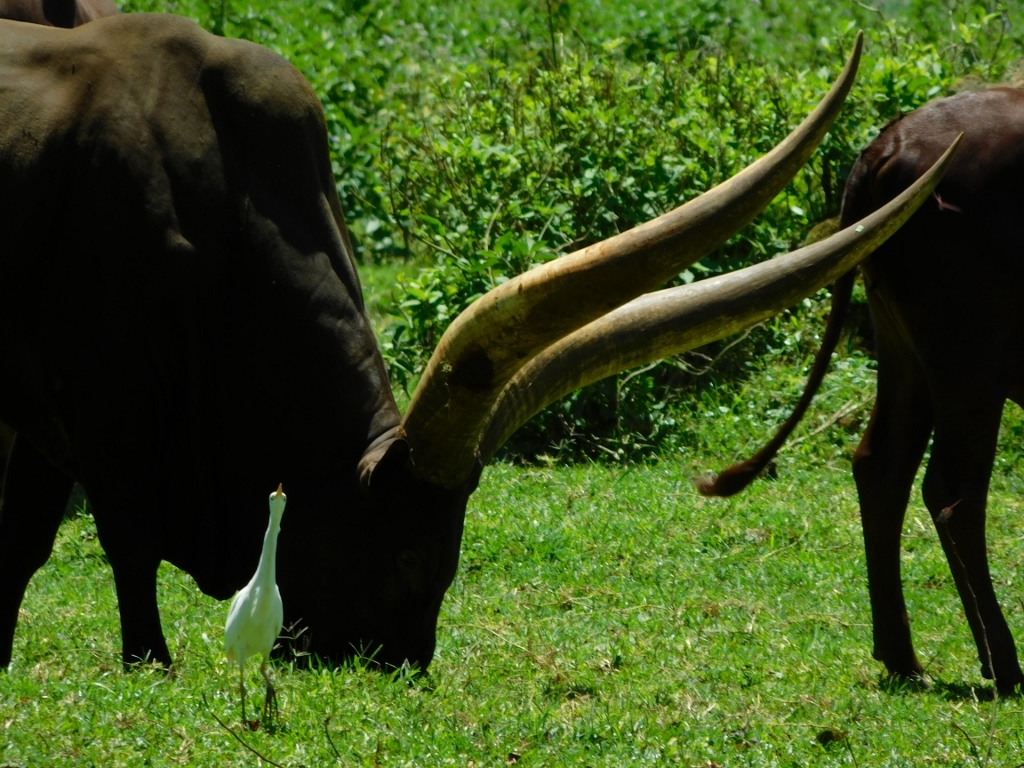 Ankole cattle with their impressive horns and a cattle egret
Ankole cattle with their impressive horns and a cattle egret
Already here, we could hear that something was happening nearby and it turned out that the noise was coming from the chimpanzees (Pan troglodytes schweinfurthii).
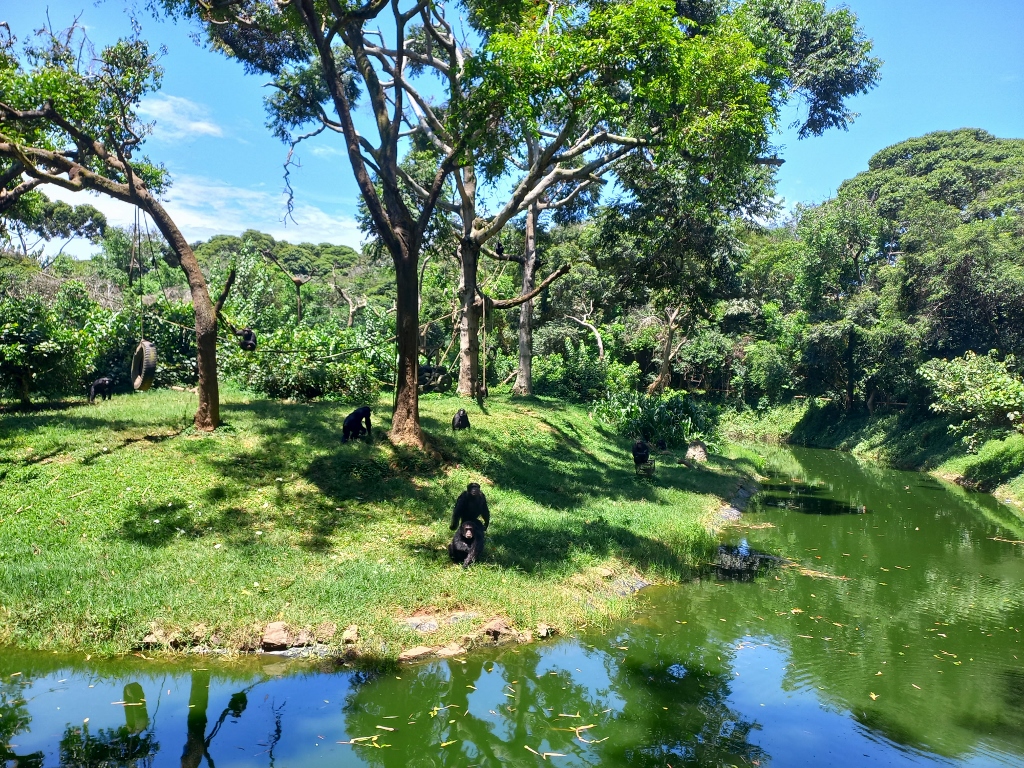 Section with chimpanzees
Section with chimpanzees
The chimpanzees also have their own special open area that can be viewed from an elevated platform. There is a fence around this area, but as far as the chimpanzees are concerned, it’s enough that there is water around the land they live on and they won’t leave that territory because they can’t swim. Although they were mostly on the move, they would occasionally stop, allowing me to take some photos.
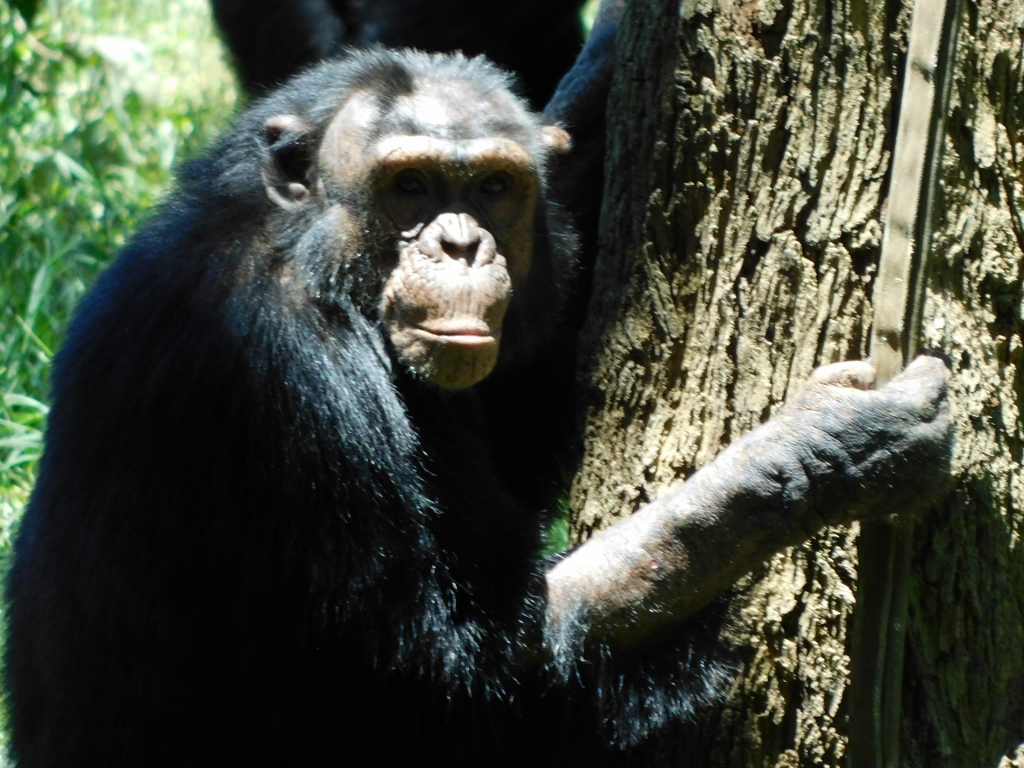 Chimpanzee
Chimpanzee
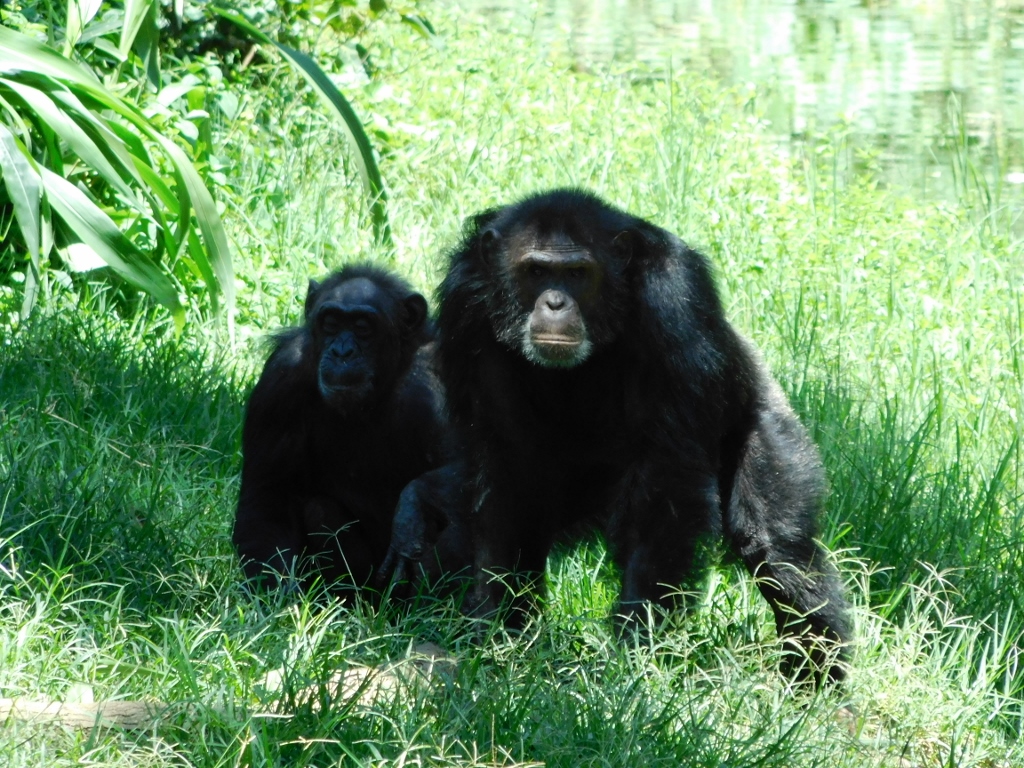 Chimpanzees
Chimpanzees
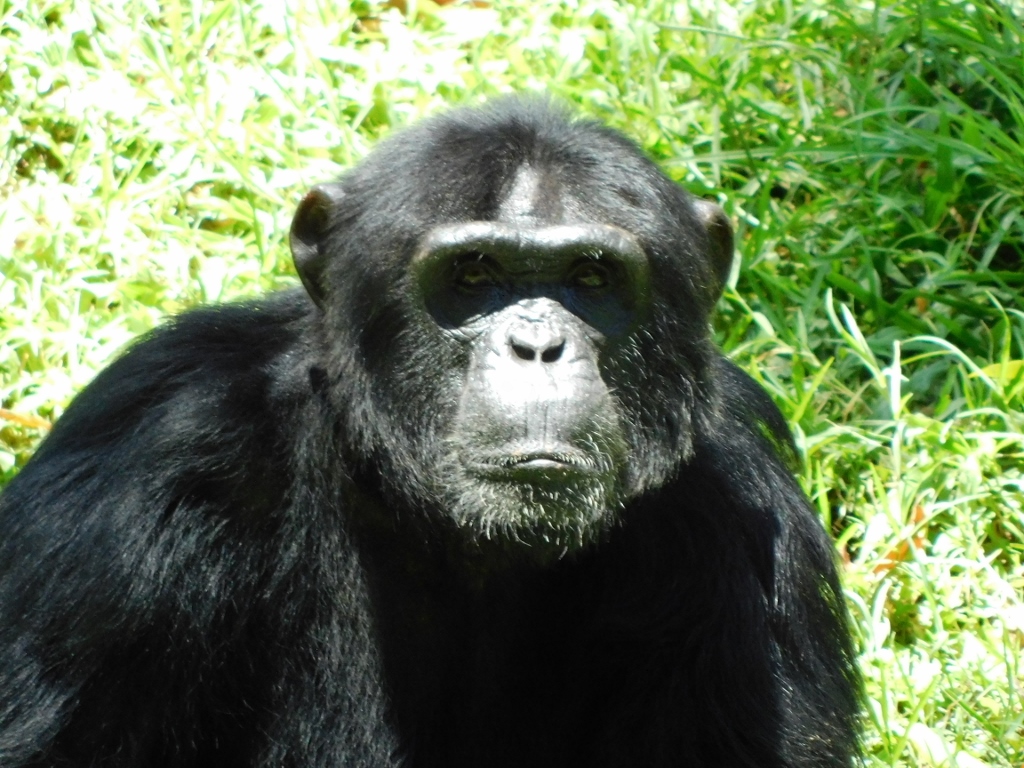 Chimpanzee
Chimpanzee
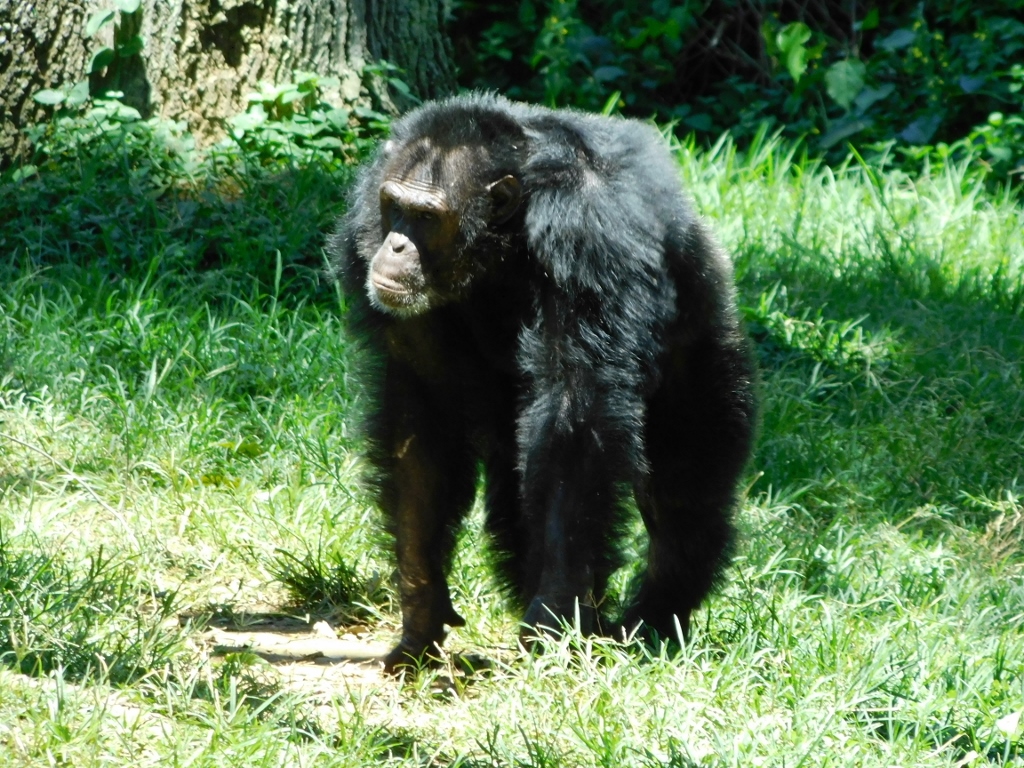 Chimpanzee
Chimpanzee
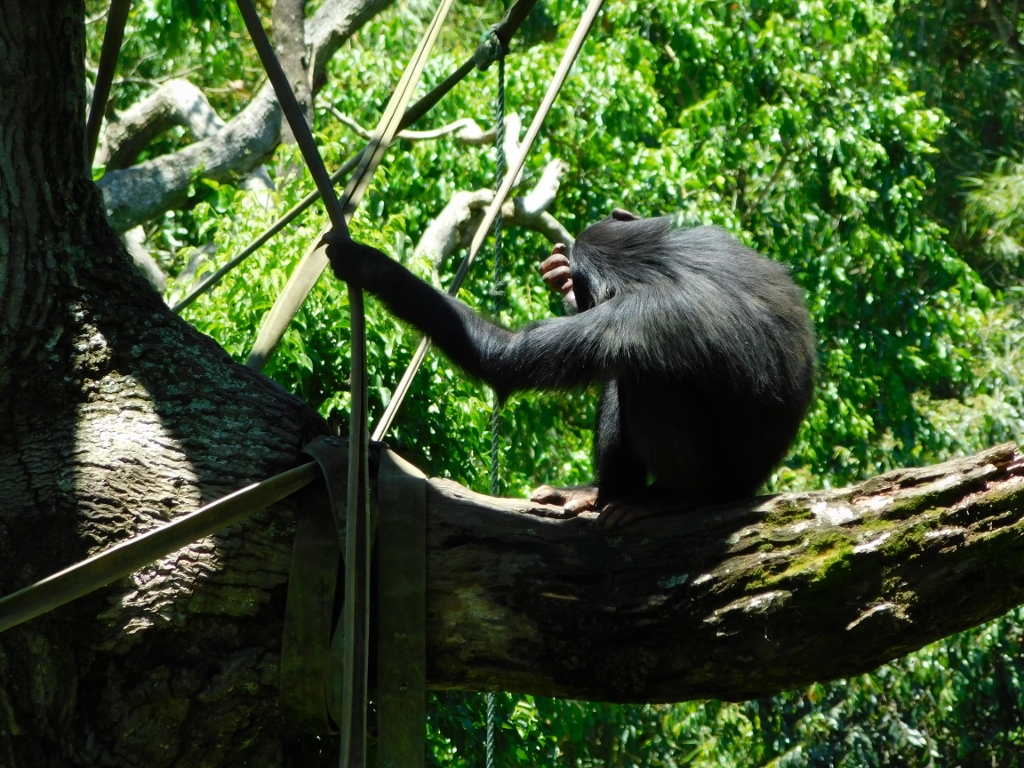 Chimpanzee
Chimpanzee
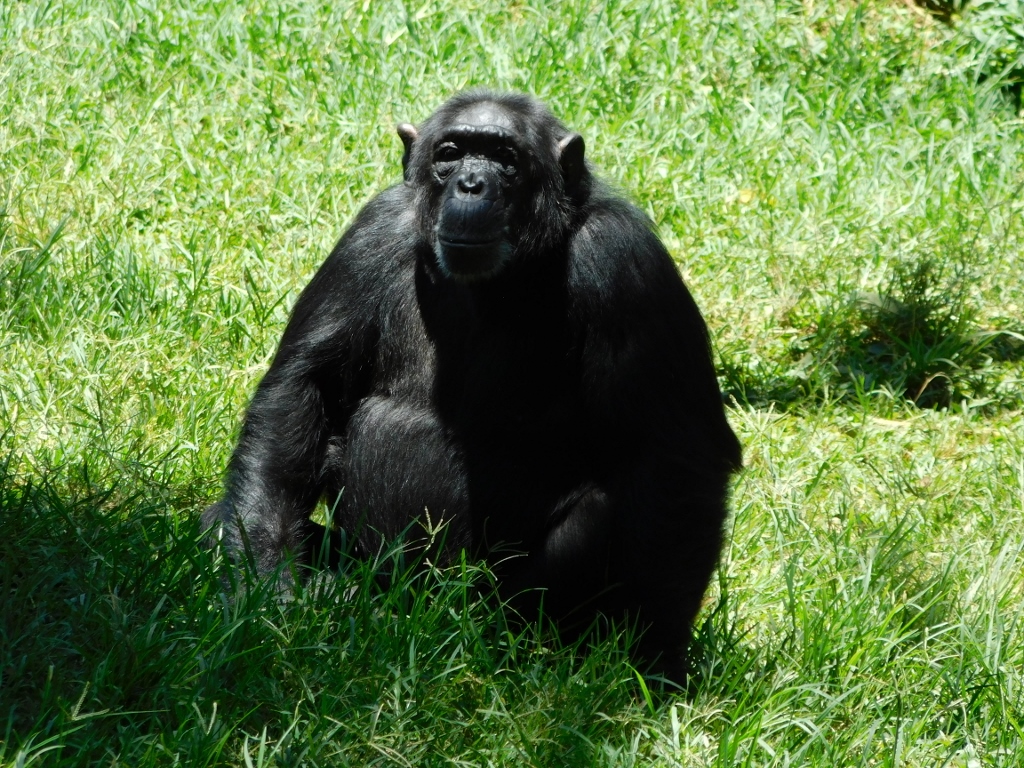 Chimpanzee
Chimpanzee
Then we walked to the section where enclosed spaces for animals were located. In one of these enclosures, we saw a shoebill (Balaeniceps rexí).
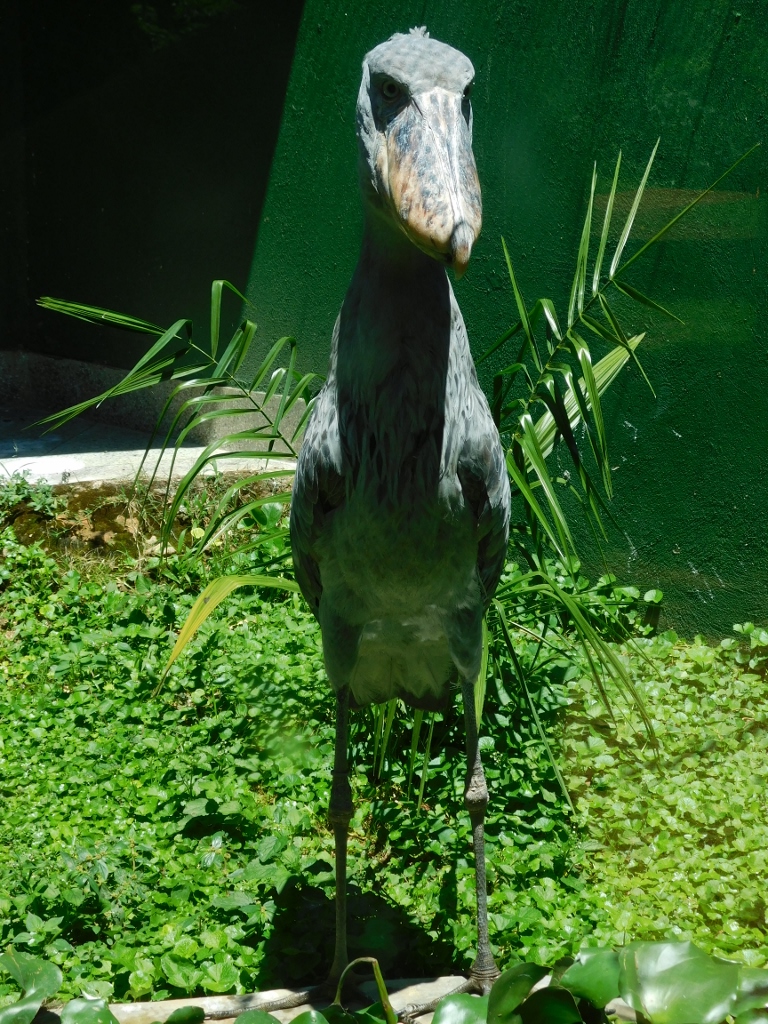 Shoebill
Shoebill
In addition to the birds that could be seen freely flying around this wildlife conservation centre, there were also many birds, probably the most valuable or endangered ones, housed in smaller enclosed spaces or cages. As our guide explained, the centre was building a huge aviary where these birds would eventually be placed, allowing them to fly freely.
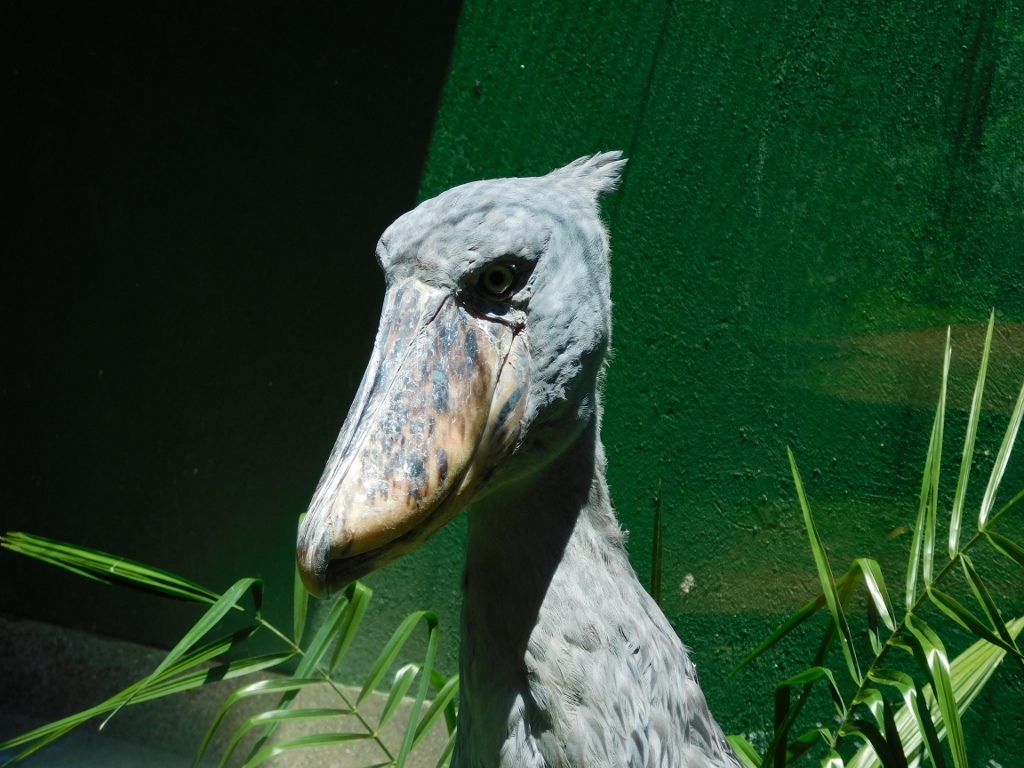 Shoebill
Shoebill
In the enclosed spaces, for entirely different and understandable reasons, there were also some snakes. A couple of pythons, as well as several venomous snakes, including the Gaboon viper (Bitis gabonica), which is considered the most venomous snake in Uganda.
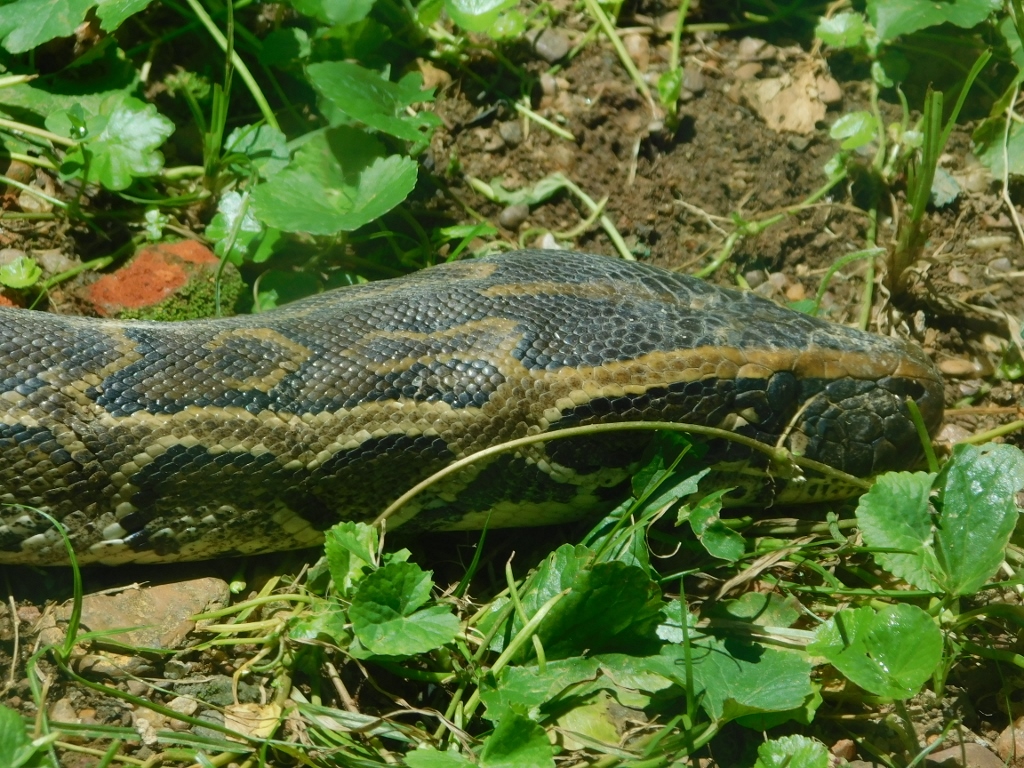 Central African rock python (Python sebae)
Central African rock python (Python sebae)
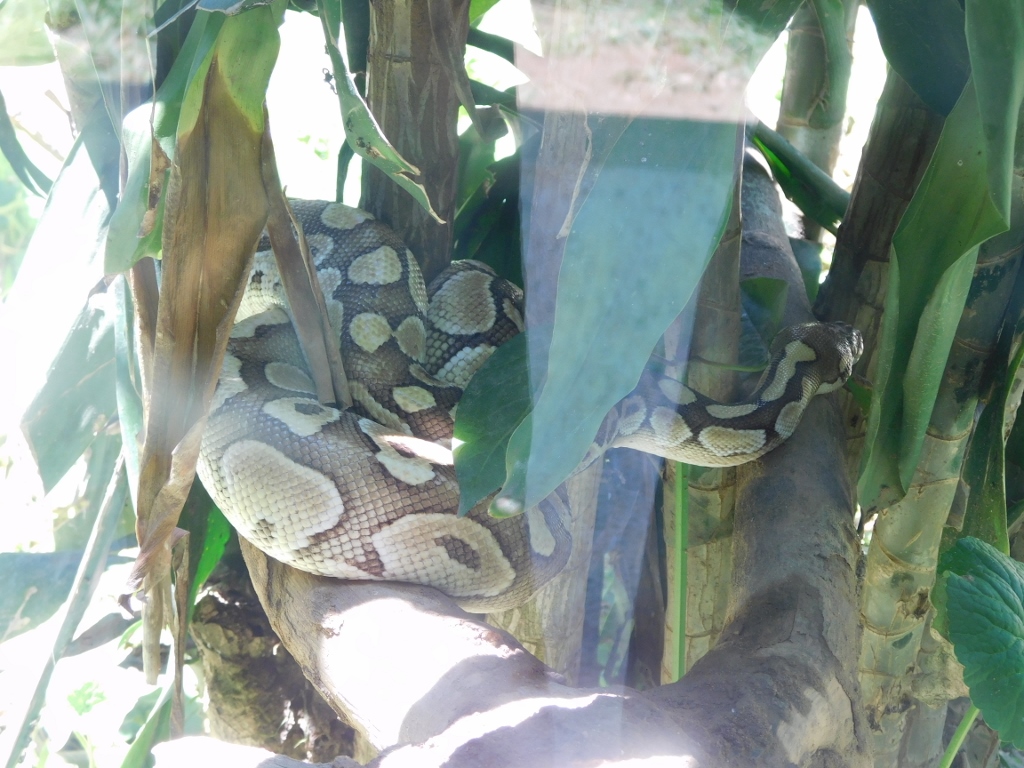 Ball python (Python regius)
Ball python (Python regius)
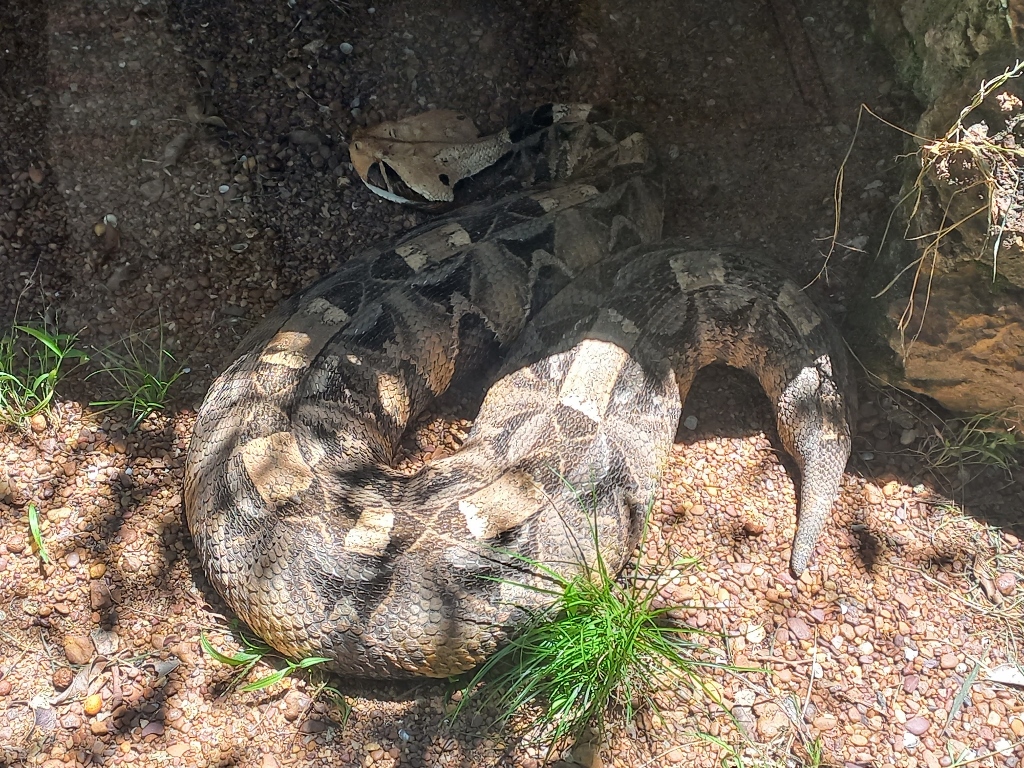 Gaboon viper (Bitis gabonica)
Gaboon viper (Bitis gabonica)
Now we started slowly to head towards the exit but still visiting different areas with various animals.
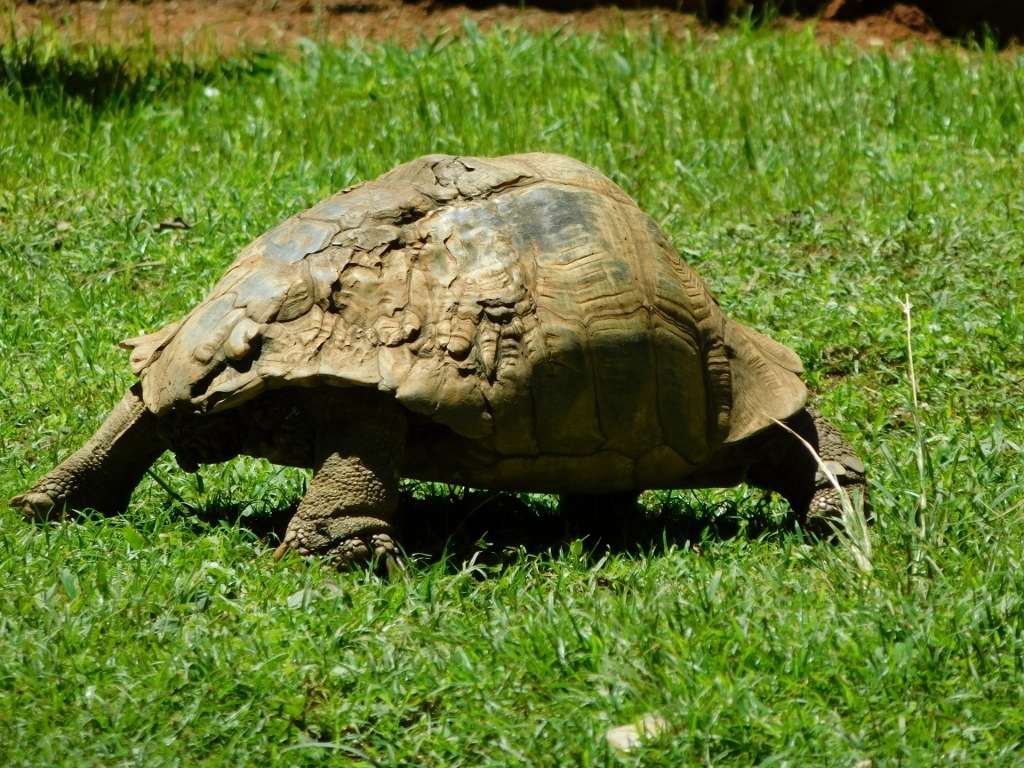 Leopard tortoise (Stigmochelis pardalis)
Leopard tortoise (Stigmochelis pardalis)
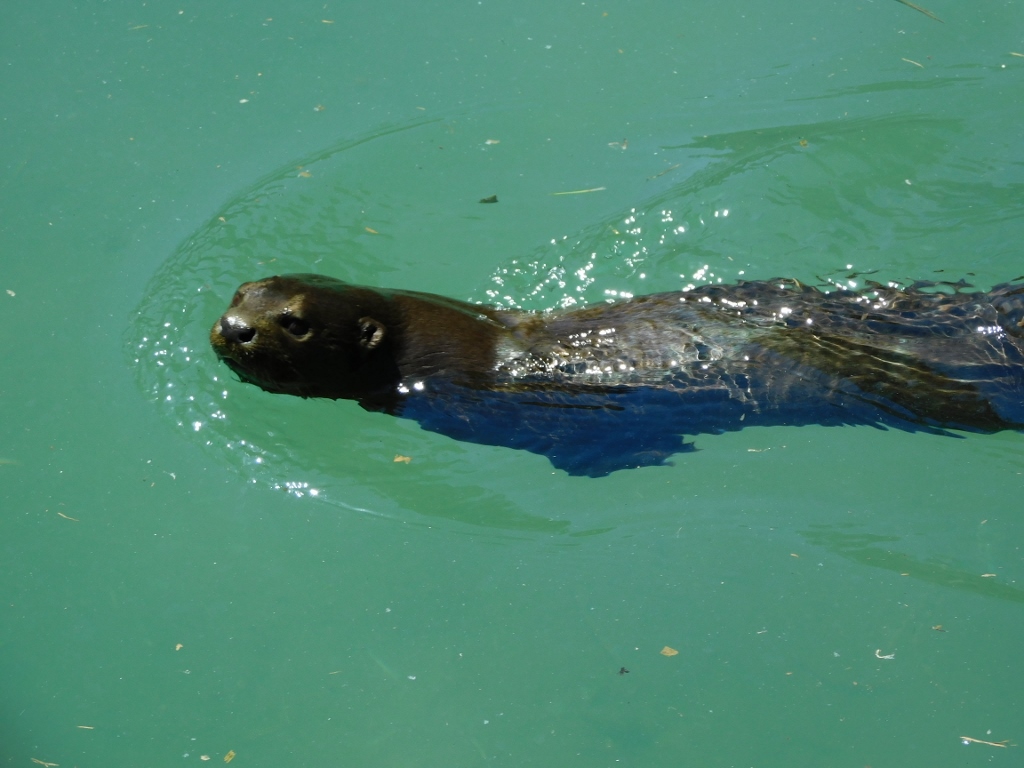 A spotted-necked otter swimming (Hydrictis maculicollis)
A spotted-necked otter swimming (Hydrictis maculicollis)
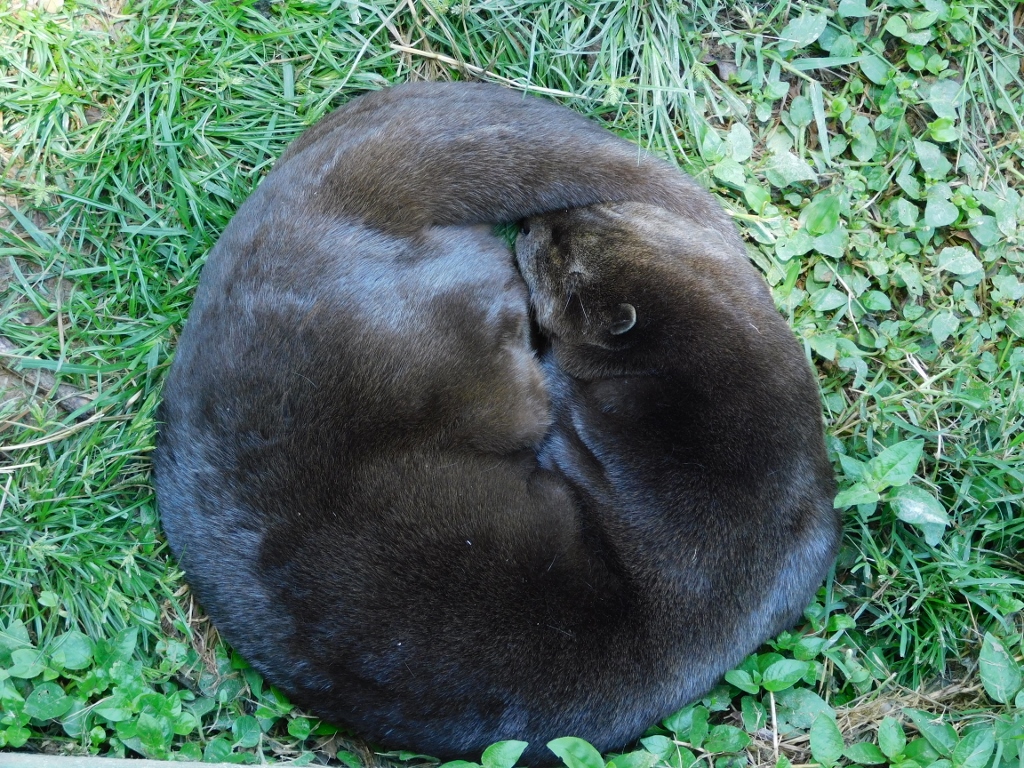 Another spotted-necked otter sleeping
Another spotted-necked otter sleeping
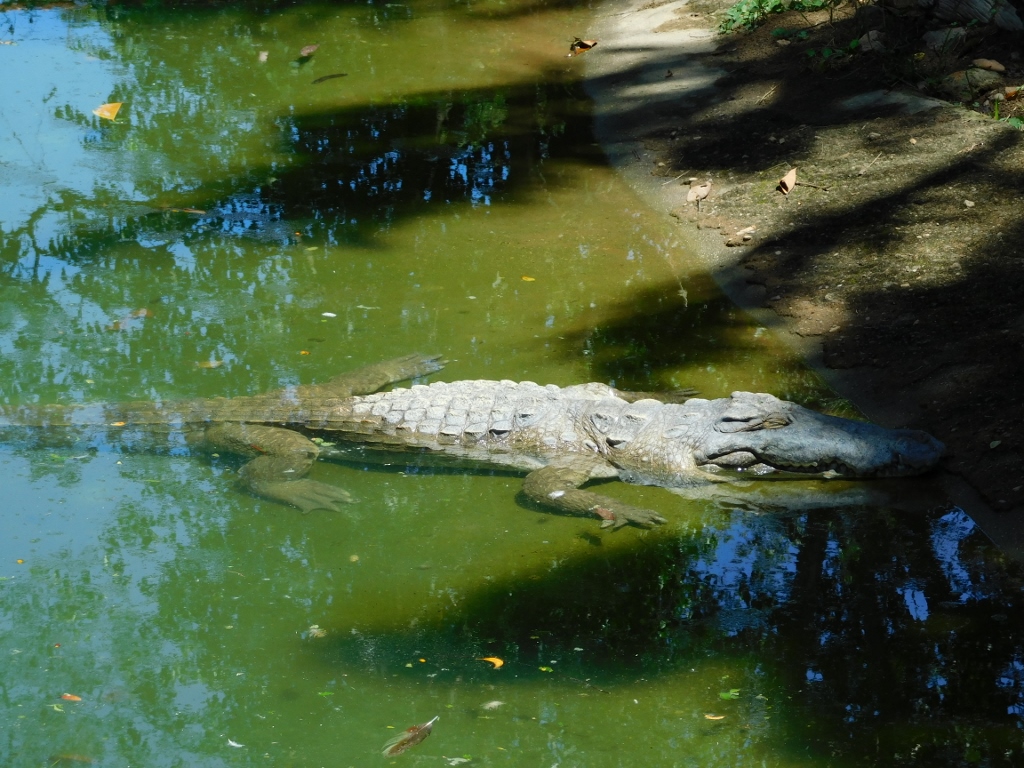 Crocodile, but I don’t know exactly which species
Crocodile, but I don’t know exactly which species
There were also animals that moved freely throughout the entire centre, like a couple of black-and-white colobuses. I have already mentioned earlier that there are several species and subspecies of this monkey, but they all belong to the genus Colobus.
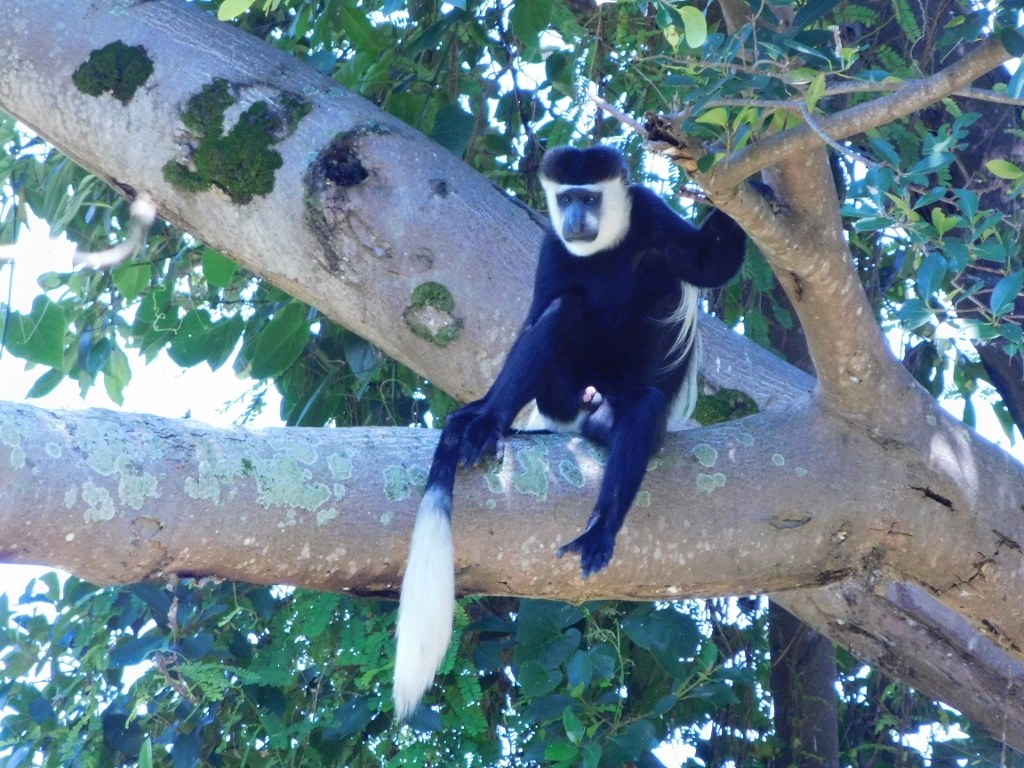 Black-and-white colobus
Black-and-white colobus
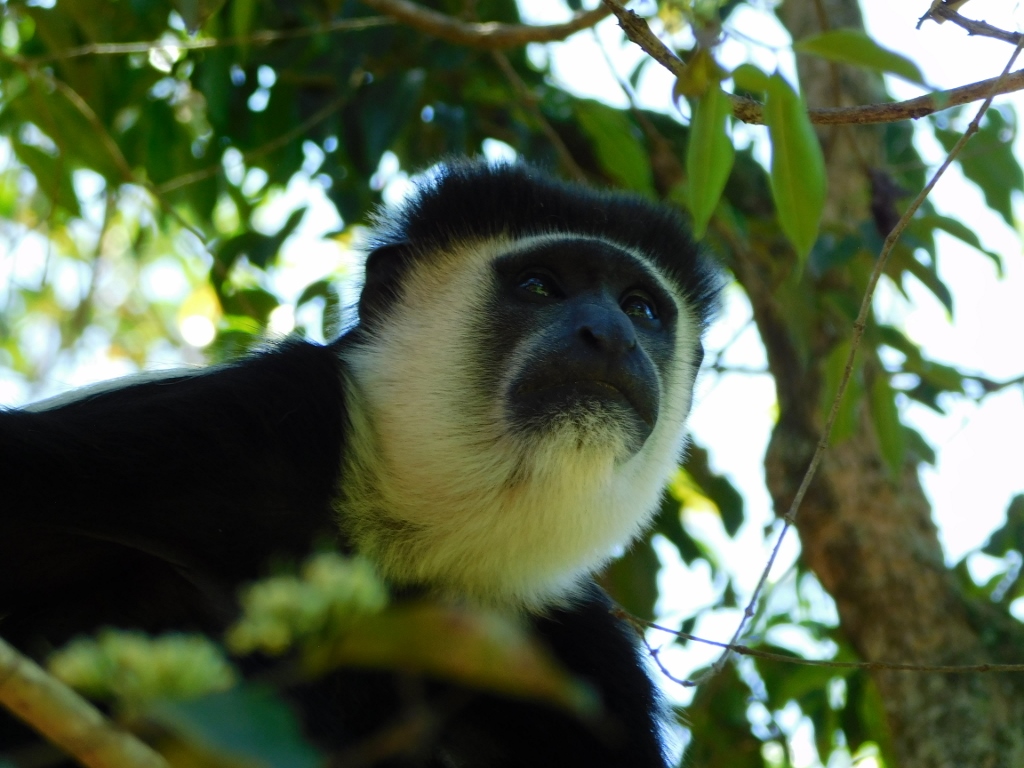 Black-and-white colobus
Black-and-white colobus
But there were also those that shared their enclosed space with other animals.
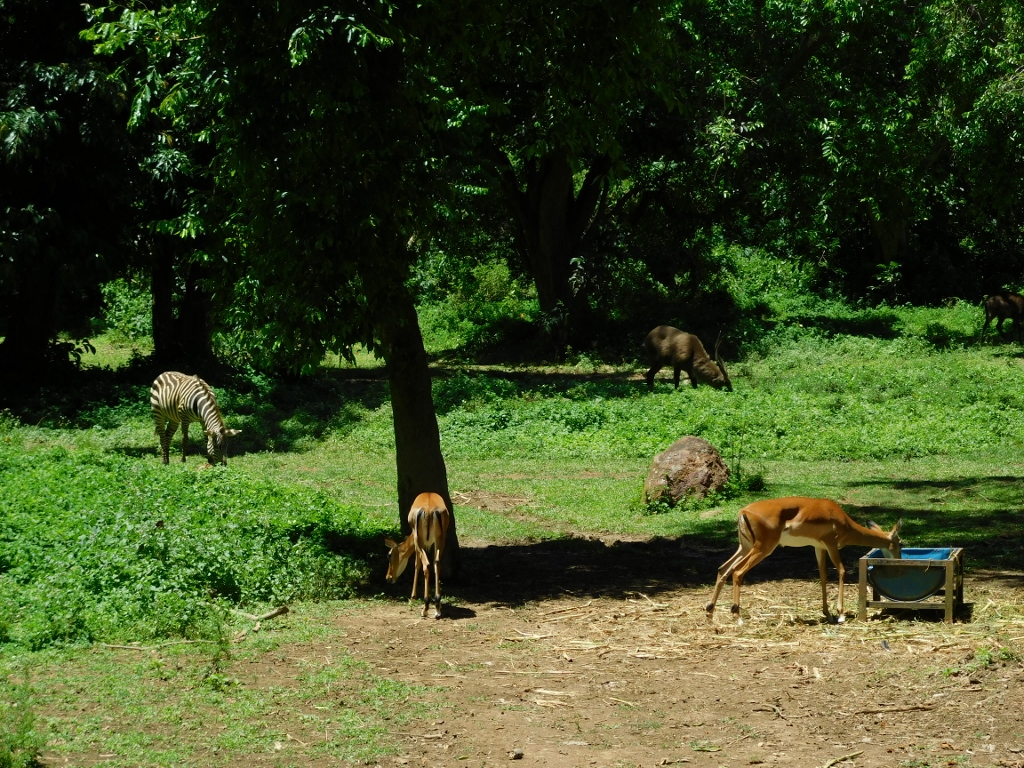 Zebra, impalas and some kind of antelope
Zebra, impalas and some kind of antelope
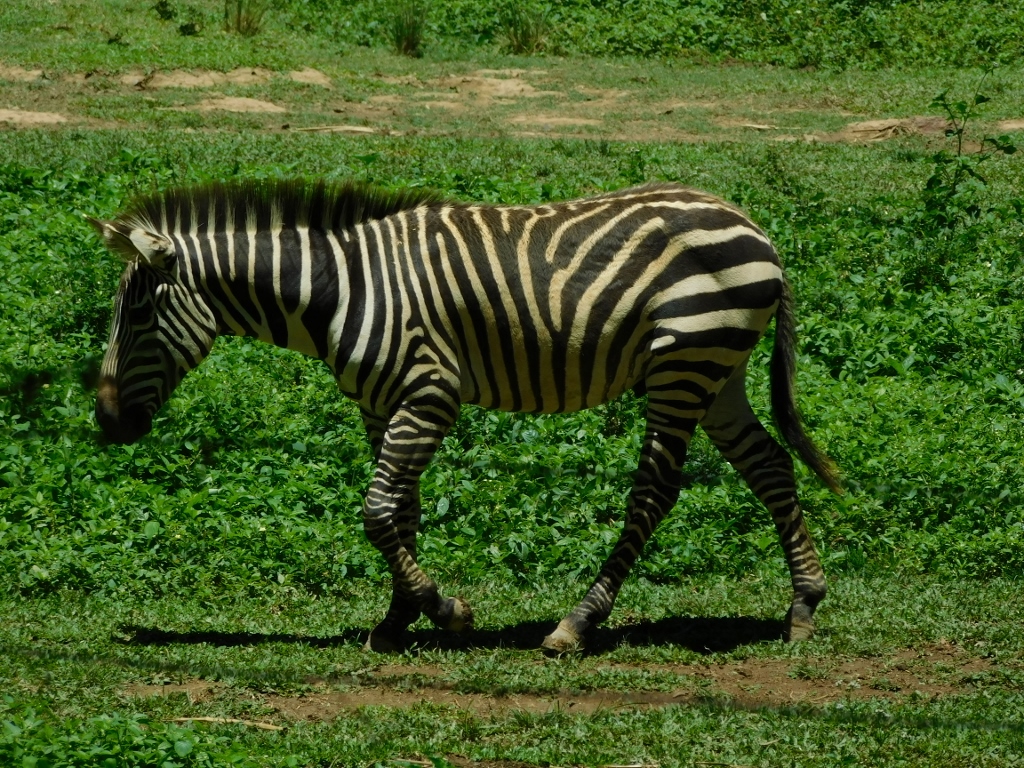 Zebra, but I don’t know exactly which species
Zebra, but I don’t know exactly which species
And then we came back to that cheetah who had meanwhile just changed the shade in which it was lying.
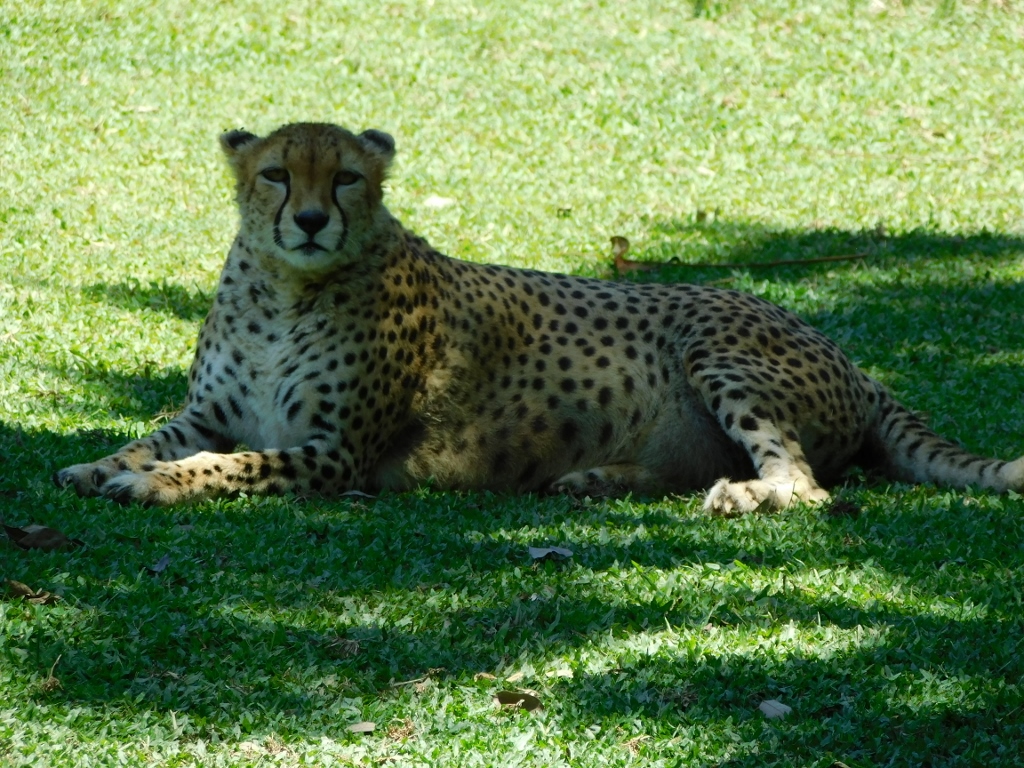 Cheetah
Cheetah
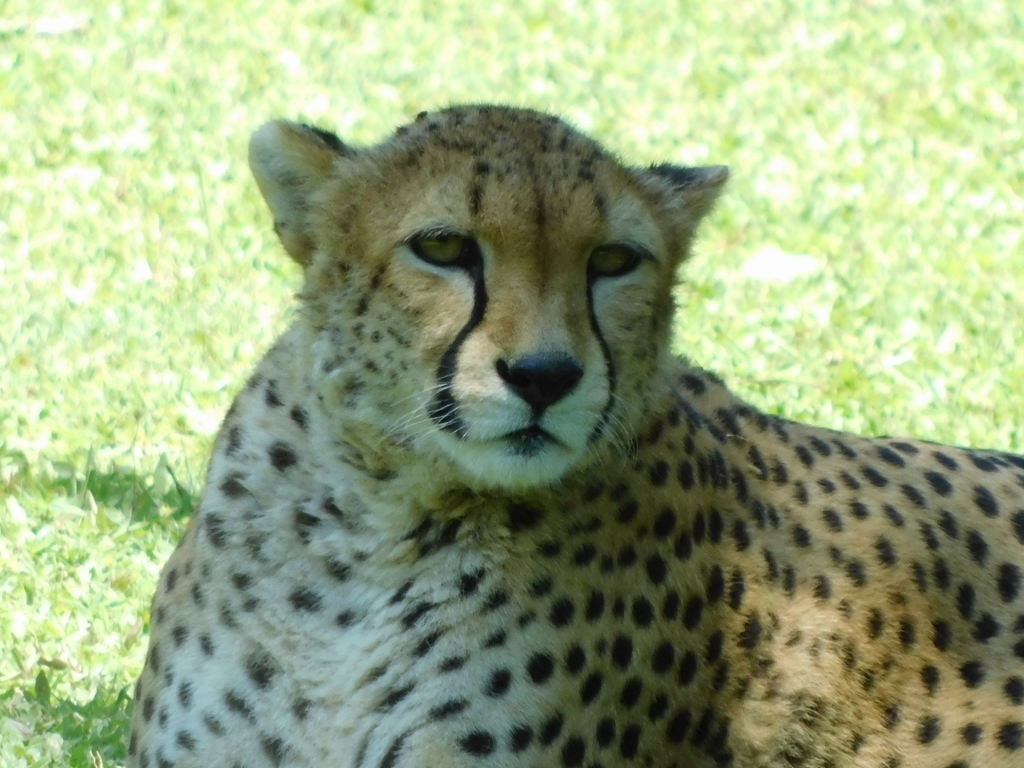 Cheetah
Cheetah
Here, we practically concluded the tour of the Uganda Wildlife Conservation Education Centre in Entebbe.
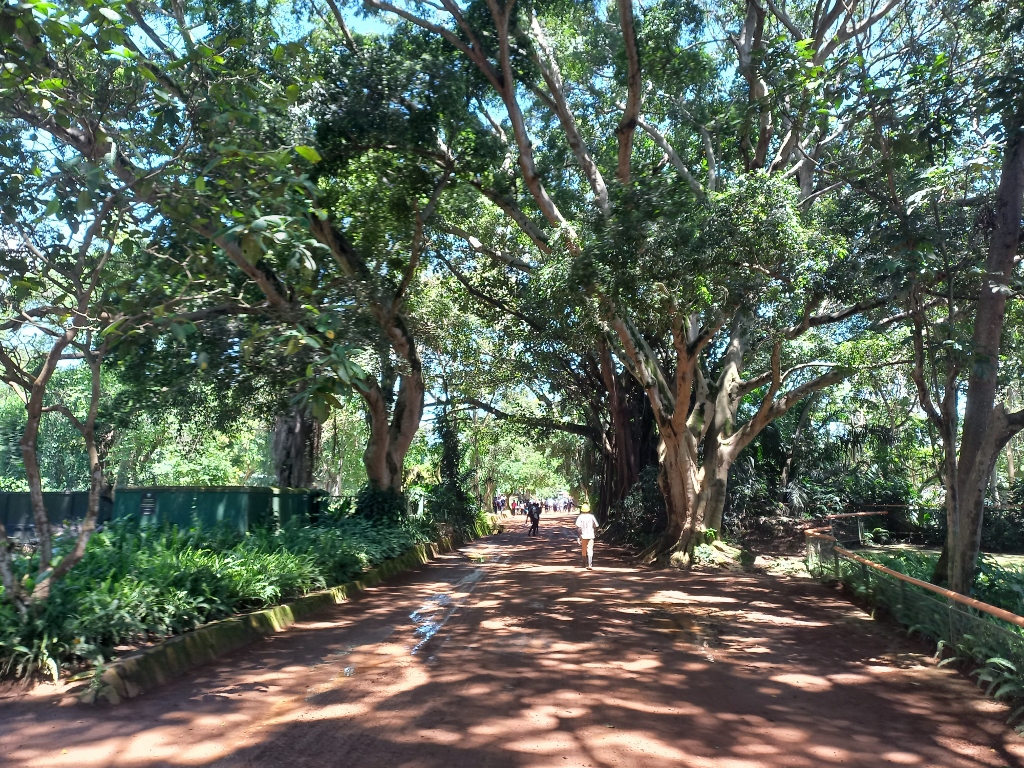 Uganda Wildlife Conservation Education Centre
Uganda Wildlife Conservation Education Centre
The tour included one final descent to the shores of Lake Victoria.
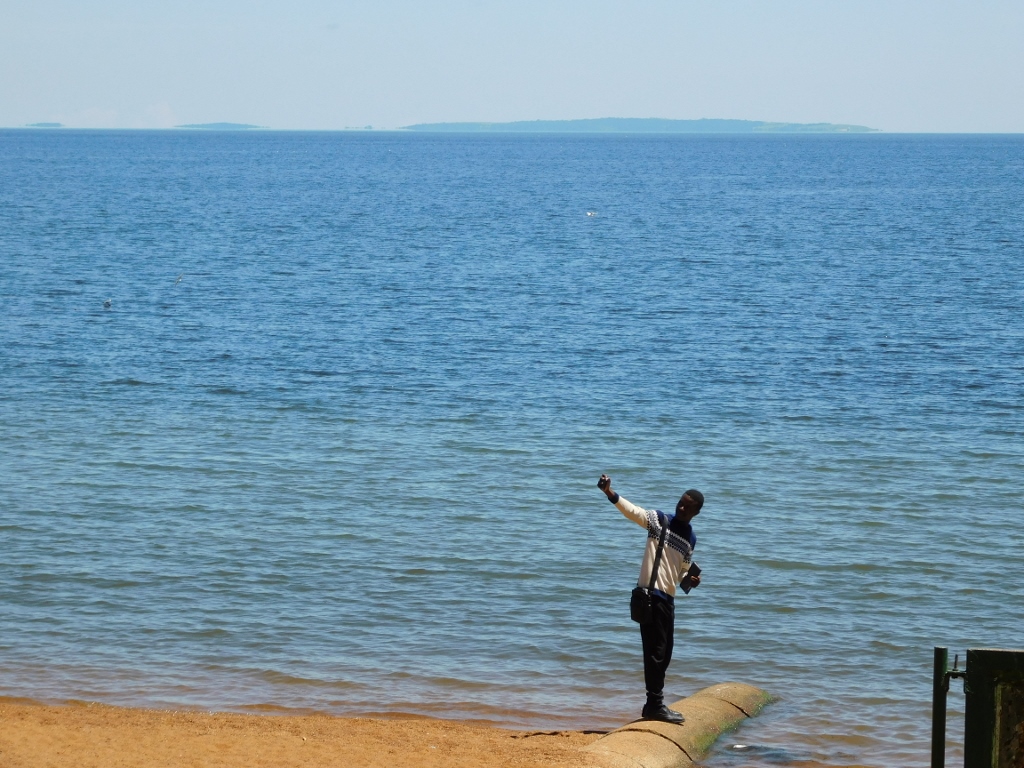 Lake Victoria
Lake Victoria
And there we were greeted by – birds.
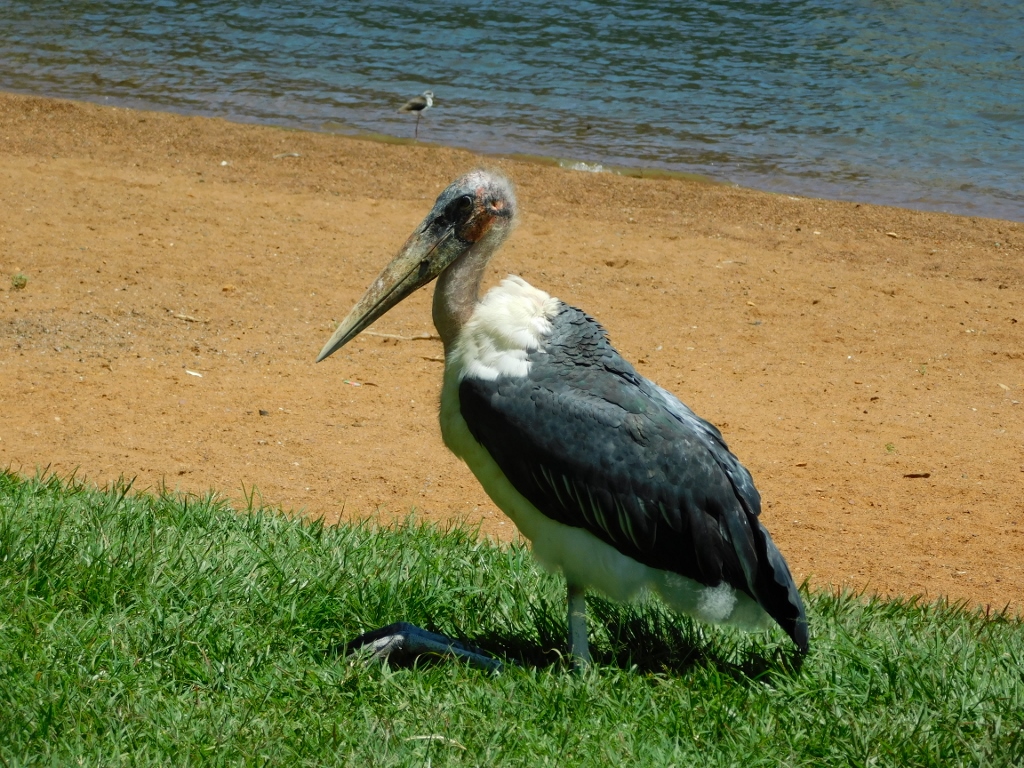 Marabou stork (Leptoptilos crumenifer) with a black-winged stilt (Himantopus himantopus) behind
Marabou stork (Leptoptilos crumenifer) with a black-winged stilt (Himantopus himantopus) behind
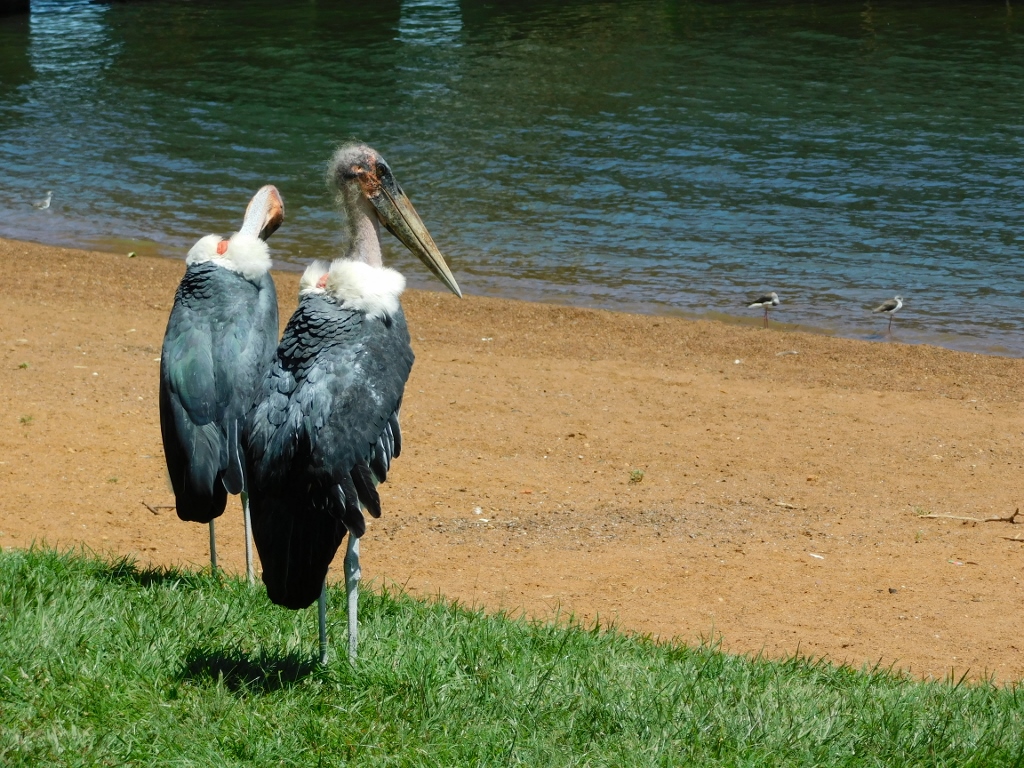 Birds on the shore of Victoria Lake
Birds on the shore of Victoria Lake
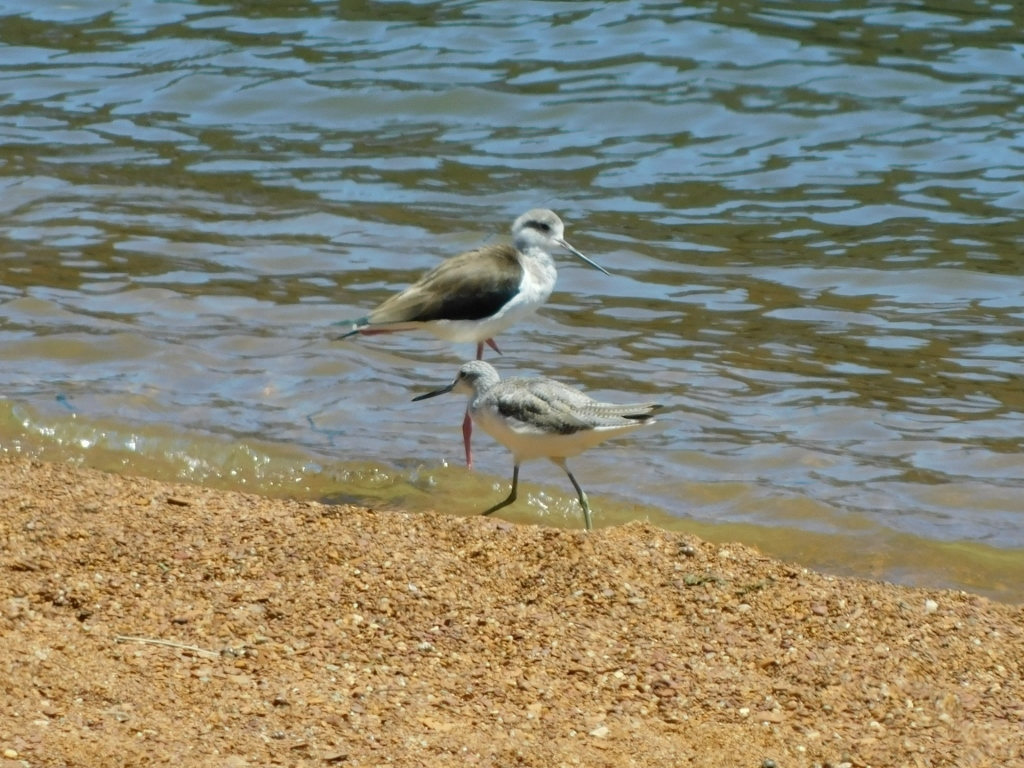 Black-winged stilt (Himantopus himantopus) in the background and common greenshank (Tringa nebularia) in the foreground
Black-winged stilt (Himantopus himantopus) in the background and common greenshank (Tringa nebularia) in the foreground
While standing on the shores of Lake Victoria, I spotted a small black-and-white bird impressively diving into the water, surely catching tiny fish. It was a pied kingfisher (Ceryle rudis). Although I was in a hurry by now, I managed to capture a photo of it when it perched on a metal rod.
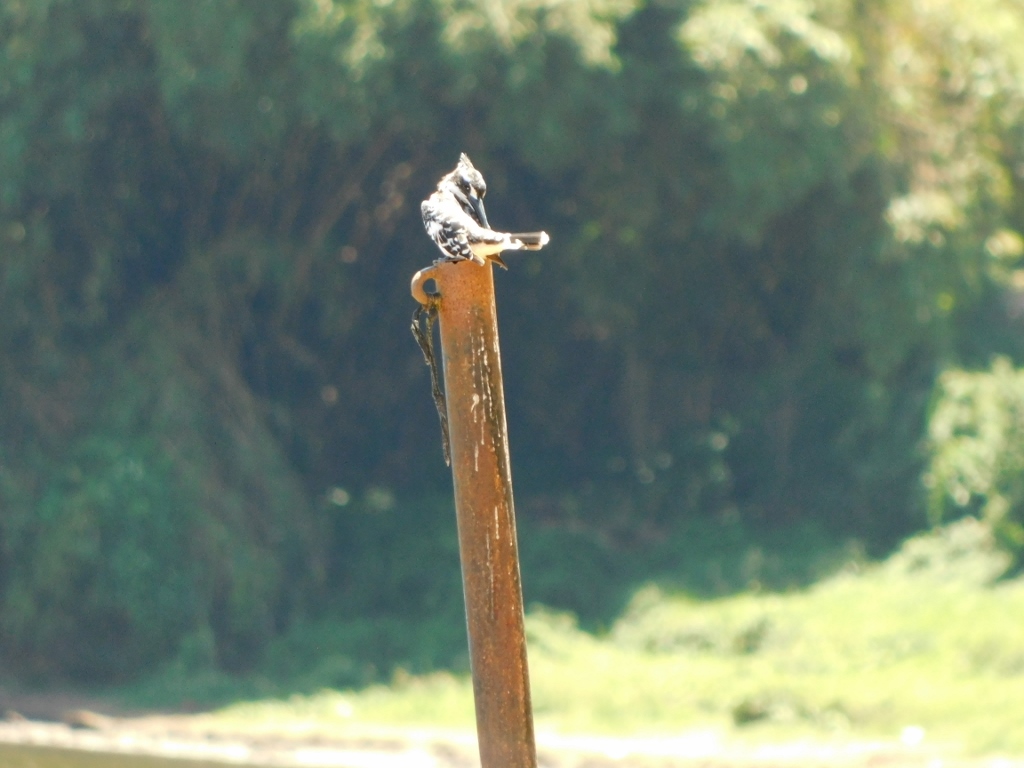 Pied kingfisher
Pied kingfisher
Later that day, I took a flight back home.
Throughout this relatively short stay in Uganda, I felt a profound connection with the environment and the people I encountered, and my soul was consistently filled with joy. The advocates of reincarnation would surely say that I must have lived here in some past life. However, I ventured even further than that. Looking around at entirely ordinary scenes, like the surroundings of the house where I slept or the landscapes I traversed, I often wondered if I could live here.
I don’t have any definite answers, of course. It’s clear to me that my life, especially in recent years, is firmly rooted in Belgrade and I have absolutely no issue with that. However, in Masindi and Uganda as a whole, I felt so wonderful that it seemed I could easily live there and be equally content.
Perhaps I should just go back to this fantastic country and check it all again. Not a bad idea, right?